#vaguely 1920's / 1930s?
Explore tagged Tumblr posts
Text


Olive Specter 🩸
Thank you, @sentate, @happylifesims, @arethabee
247 notes
·
View notes
Text
[“While Marxism-Leninism accorded to a surprising degree with traditional Vietnamese notions of government and society, there were elements within Vietnamese Marxism that appeared completely unfamiliar to Westerners. As scholars such as Pike and Zasloff of the RAND Corporation pointed out, the northern as well as the southern Party cadres seemed to know very little about Marxist doctrine. Few of them could explain the class struggle of the international proletariat against world capitalism or describe what their future society would look like. Even middle-level cadres tended to describe the programs of the Party in such vague terms as “land to the tillers” and “the abolition of classes.” Furthermore, there was a strangely moralistic tone to all of their pronouncements. Eager to show that Communism was essentially un-Vietnamese, Pike, for one, concluded that the People’s Revolutionary Party was not Marxist-Leninist in any philosophical sense at all.
To draw such a conclusion is, however, to misunderstand the place of ideology in a society. Like religion, ideology must rest upon a base of cultural, social, and economic conditions. Many Americans tend to identify Communism as the practice of the Soviet leadership. To do so is to ignore not only important ideological questions but the difference between theory and practice, life and literature. What is “pure Communism”? Which among the Jesuits, the Copts, and the Holy Rollers represents “true Christianity”?
In their awe of the French, some of the early Marxists clung to the debates and conventions of the European parties and ended by communicating as much to the Vietnamese as actors speaking in Shakespearian accents would to a twentieth-century audience. As Lenin and Ho Chi Minh understood, Marxism was not a dead language or a precise set of instructions; it was a theory that required translation into life. The work of Ho Chi Minh was to make that translation for the Vietnamese.
The introduction of Marxism into Vietnam and the development of a Marxist movement were attended by a series of far-reaching debates on revolutionary strategy. At various points in the 1920’s and 1930’s there were three Leninist parties and four Trotskyite factions in Vietnam, all of which took slightly different positions on the issues of the class struggle, of nationalism versus internationalism, and on the problems of alliance with the Soviet Comintern, the Chinese Kuomintang, and the French Communist Party. The Trotskyites in general took a “purist” line, opposing the Comintern and its allies in the Kuomintang, opposing an alliance of the Vietnamese proletariat with the peasants and the national bourgeoisie. For them the proletariat constituted the one true revolutionary class. The industrial workers alone were to participate in the Communist organization.
The curiosity of this line was that the Trotskyite parties were based primarily in Saigon, where there was no urban proletariat to speak of. The Trotskyites disliked French colonialism as much as anyone, but their very exclusiveness drove them to legal activities and finally to dependence on the undependable French left wing. By contrast, Ho Chi Minh’s organization — finally, a coalition of three regional groups called the Indochinese Communist Party — stood for the Leninist program of a two-stage revolution: the first stage a national rebellion uniting the peasants and the bourgeoisie under the leadership of the proletariat, and the second the proletarian, socialist revolution.
Allied with the Comintern and in certain periods, the Chinese Kuomintang, the ICP took what advantages the French Stalinist party could offer it during the period of the Popular Front. At the same time it continued to build, where it could, a popular base among all classes of Vietnamese. When the moment of opportunity came in 1945, Ho Chi Minh resolved this last tactical ambiguity. (And without cost to himself, since the French Communist Party did not contest the government over the issue of decolonization.) Abandoning the “Indochinese Communist Party,” the Dong Duong Cong San Dang, the name that spoke of French colonialism and a political unreality, he formed the Viet Minh (Viet Nam Doc Lap Dong Minh Hoi), the Vietnam Independence League. At one stroke he rid himself of French influence and class bias. His movement would be nationalist, but it would be nonetheless orthodox from a Marxist-Leninist point of view. The Viet Minh would carry out the first stage of the revolution — a stage that had no fixed duration, but that depended on the development of the various social classes within it.
Upon bringing the name “Vietnam” into the name of his party, Ho Chi Minh took the concomitant step of changing the phrase indicating “socialism” and his future social policy. For cong san, a phrase of Chinese roots suggesting a secular aggregate of individuals, he substituted xa hoi, a Vietnamese phrase linking the future distribution of wealth with the sacred communal traditions of the old village.(Xa Hoi Dang was the name of the socialist party within the Viet Minh.) The second alteration might also seem to be opportunist — was not Marx an atheist? But for Marx revolution meant not a complete break with the past, but rather the fulfillment of what was already taking place within a society. Ho Chi Minh’s new formulation merely reflected the fact that in Vietnam the proletariat remained a small minority. The first stage of the Vietnamese revolution would take place not within a secularly organized industrial society, but within an agrarian community that visualized itself in sacred terms.”]
frances fitzgerald, from fire in the lake: the vietnamese and the americans in vietnam, 1972
39 notes
·
View notes
Text
WIP Intro: Cold Iron

Series: Title TBD Genre: dark urban fantasy Draft 1 status: complete (85,039 words) Draft 2 status: typed through chapter 18
Plot
Life is hard for a changeling in 1956. Just like it was in the 1910's and the 1920's and the 1930's. The 40's were actually a little better because Americans had a different enemy to focus on, but now they're back to fight off the Fae threat with a new military branch. And to them, there is no difference between the powerful Fae who cross the veil for nefarious purposes, the wildlings lurking in alleys and tunnels to grab any scraps they can, and the changelings left in place of stolen human children.
And maybe there is no difference, really. Shakatra and their brother Kris, both abandoned changelings, have been living for decades in the tunnels under Seattle, stealing food and picking fights with wildlings and caring for no one but each other. But now it's 1956, and Shakatra has just remembered their birthday. Though they are all but ageless, the human whose place they took would be turning 40 this year, and she must be living horribly beyond the veil as servant to the Fae. It's not fair that Shaka goes free. And things that aren't fair bother them.
So the two set off to cross the veil. Just a quick road trip followed by an unknown ritual followed by sneaking into a Fae court and sneaking out again with one—or maybe two—freed humans. And then they'll go back to their life. Easy, right?
Except that nothing is as they expected, including the humans they meant to save—but they might just leave with everything they didn't know they needed. If they can survive.
Characters
Shakatra Zoawin: Turning 40 this year, but seemingly still 20. An autistic changeling full of feral rage with a knack for glamours (especially the kind that make others give them pancakes). Fears how much they hurt everyone they love but can't make themself protect their brother by leaving him. Left their abusive human "family" as a teenager and has been homeless since. Over the course of the story, realizes that their gender is No (and introduced to "they" as a pronoun by a Fae they later kill).
Kristoffer Zoawin: Also turning 40 this year—he thinks. He has to more or less guess at his age, having been abandoned by the humans he was left with so young he doesn't know what name they gave him. But Shakatra was 12 when they met, so Kris decided he was 12 then too. Trans but "raised" (vaguely kept alive) by a loose group of wildlings until he was old enough to survive alone and so didn't realize until puberty that he wasn't like other boys. Actually, he understood that as not just an inhuman changeling, but a Black one, that he was hated more than Shakatra long before he understood that he would have been assigned female. Equally traumatized, but with a more easygoing disposition, he avoids doing magic because it makes him ill and instead enjoys people watching and eating good food and drawing in paint or chalk.
Maggie Davis: The human girl who would have been the protagonist if this were a YA book written 15 years ago. 21 years old and has the rare but not unheard of ability to see through glamours, so not only has she seen monsters her entire life but she was the only one to realize that her brother Nick was replaced as a toddler. She loved the changeling left in his place in a way no one else did, but he (as most changelings) died young and she chose to leave her small town and find her original brother, who would have been about 17 then. Conveniently, she found 2 Fae passing through and forcibly attached herself to them, much to Kris' delight and Shaka's dismay. But she would prove surprisingly useful in the chaos that followed as their mission fell apart.
Aesthetic

Character art (Shakatra)




Commissioned from magspy, clickerflight, vampyredyke, and cullenakingirog respectively
Tag list
@stesierra @amielbjacobs @ettawritesnstudies
#hey look it’s a new intro!#I changed the fashion I do these for halara so wanted to make this one match#moshke writes#writeblr#cold iron
8 notes
·
View notes
Note
i've seen couple of fics in your lists that took time in 20th centuries or like the past in general. do you mind if you put them in one list tho?
yes i tend to read a lot of them hehe
prepare yourself, it's gonna be a very long list
Medieval? 20th century fics? 1920s 1930s 1940s 1950s 1960s 1970s etc au
Adore You by isthatyoularry
M, 66k
“We invited our new acquaintances from uptown. You’ve simply got to meet their oldest son!” said his mother with a flourish, and suddenly it became abundantly clear as to why his parents had so adamantly demanded he join them in Deansville for the entirety of the summer.
Against his wishes, Harry spends the holidays at his family’s summer estate, and is reluctantly pulled into a courtship he didn’t ask for. Harry doesn’t want to get married, but Louis does. They don’t fit, but then again they really, really do.
Vaguely set in the 1920’s. Headpieces, jazz, fashionable canes, and flapper dresses, and that.
Chasing Empty Spaces by Lis (domesticharry)
E, 79k
The year is 1934 and Harry Styles was to inherent the largest tobacco firm in the south. His parents have picked out the “perfect” girl for him to marry and he has the privilege of receiving the highest education possible. The problem was, Harry hadn’t realized he didn’t actually want any part of that future until he met a mechanic named, Louis Tomlinson.
Through Eerie Chaos by MediaWhore
G, 102k
For as long as anyone can remember, Old Hillsbridge Manor has always been believed to be haunted. Everyone in the village agrees and keeps a respectful, fearful, distance. New in town after a bad breakup and an internship that led to disappointment rather than a permanent job, Harry Styles figures taking pictures of the decrepit building could be a great new creative project. Or at least a much-needed distraction while he searches for a job and crashes at his parents’ new house. No one warned him about the apparitions though; about the music, the laughter, the people who flicker and vanish when you call after them, the echoes of a past that should be long gone… Harry has never believed in spirits but even he can admit that there’s something weird going on. What starts as mere curiosity evolves into a full-blown investigation and soon enough, Harry finds himself making friends with an aristocrat from the 1920s and struggling with finding the best way to tell him that he’s dead. The Ghost Hunter AU where Niall lives to prove ghosts are real, Zayn is a skeptical librarian and Harry gets caught up in a century-old mystery and catches feeling in the process.
Landslide by aimmyarrowshigh, spibsy
E, 143k
The year is 1976. In November, Jimmy Carter will take control of the White House. Americans are meeting Laverne & Shirley at their apartment in Milwaukee. Hotel California diverges from the reign of Kool & the Gang. And the FBI is still reeling from the repercussions of Watergate, the tragedy at Wounded Knee, Operation Family Secrets, and the strategic terrors of the anti-cult movement. That's what Special Agent Harry Styles has been told is the basis of his mission to an abandoned farmhouse in rural New Hampshire. With his hair grown out long and his shirt untucked, he's going undercover to do reconnaissance on suspected cult leader Louis Tomlinson, who has led a group of people out into the middle of nowhere, leaving no record of the life he'd had before. All Harry knows is what the agency gave him: Tomlinson's name, and instructions to figure out what he's doing with the eleven people he brought with him. In the year that Harry spends undercover and under Louis Tomlinson's wing, he learns more than he ever expected.
Here In The Afterglow by fondleeds
NR, 88k
“If you hadn’t noticed, I don’t have many friends,” Louis whispers, the blossom of insecurity in his stomach unfurling and clawing its way into his throat. Harry is silent for a long time, and then he speaks; a soft, slow uncurl that makes Louis’ stomach shake. “I’ll be your friend.” - 1970’s AU. In a tiny town in Idaho, Louis’ life is changed forever by the arrival of a curious stranger.
Victorian Boy by audreyyheart
E, 101k
Victorian AU. Harry the virgin Duke of Somerset knows little of love, while Louis the sly Duke of Warwick knows too much. When the two dukes come together for the Bilsdale fox hunt in York, Harry finds himself drawn into Louis' bed. But when secrets from Louis' dark past come to light, Harry fears that the fox isn't the only one being hunted.
Ever Since I Tried Your Way by flowercrownfemme
E, 25k
Harry had been kissed before, but never like this. He’d shared sweet, curious kisses behind bleachers and in soda shop booths, one or two more daring ones in cars parked on dark suburban streets, but the girls he’d kissed had never filled him with the desperation that erupted from Louis’ touch. He parted his lips and pulled him closer, as though he could breathe Louis straight into his lungs, as if he could swallow him. He wanted to consume Louis the way he consumed the body and blood of Christ. He wanted to place Louis on his tongue and feel him dissolve into a frothy mess of starch and saliva. He wanted to gulp him down until his teeth were stained purple and he was drunk on him. He wanted him in some violent holy way that made his hands shake where they were twisted in Louis’ shirt. In 1949 Harry left his bride at the altar, running away from the only life he'd known. When a kindhearted farmer offers him a ride in his truck and a place to sleep the two find themselves inexplicably drawn together. Isolated on Louis' farm with nobody but a field of dairy cows to intrude, the men are finally able to explore the parts of themselves they've spent their lives hiding away.
the last person on earth i could ever marry by igotfeels
E, 50k
A Pride and Prejudice AU, where Harry is fed up with rich men and Mr Tomlinson is a very rich man.
Love you in the dark by perzikje
E, 10k
The story of a historical wedding night: in which Louis is quite unaware as to just how clueless his brand new husband is about sex. They try their best to figure it out together.
An Invincible Summer by Brooklyn_Babyloon
E, 44k
Never content to stay in one place for long, a few months down south researching for his novel seemed like an idyllic, slow-paced summer to Louis. He wasn't ready for the blistering heat, the backbreaking work of watermelon picking, or how stifling the attitudes in rural Georgia would feel. And he definitely hadn’t anticipated falling in love with the farmer’s son. The summer of 1946 would turn out to be everything worth writing about.
a perpetual sunrise by moonshinelouis (lunarflwrs)
M, 31k
Louis Tomlinson lives the archetype of a successful man: he has a big white house, a gorgeous wife, and adorable daughters. Happiness is a superfluity, really. And his daughters' dimpled piano teacher is nothing more than a sinful distraction. 1950s AU.
Atlas At Last by louisandthealien
M, 83k
He doesn’t know what he had been expecting out of the road trip itself besides burping contests and too much shitty gas station food with Oli and Stan, but in the brief moment before Harry ambles up his driveway, Louis idly wonders if this is about to become some sort of Gay Coming of Age story. Maine to California in ten days. In which Zayn’s an open-shirt hippie they meet somewhere in Ohio, Liam’s the pastor’s son running away from home, and Niall’s the number they call on the bathroom wall. It’s 1978. Harry and Louis are just trying to get to San Fran in time for the Queen concert.
Box of Rain by indierection (amandamoraisa)
M, 26k
Louis is definitely not the next Muhammad Ali, just an illegal boxer with no prospects for the future. Harry is a hippie Uni student that in his free time informally works as a ring boy. Somehow he manages to always get tangled on the ropes and at the same time charm the pants off of all the fighters and patrons. They meet in Manchester in 1977 and, even though they don't seem to have much in common, they... Well, they just sort of click, really. - The one with a friendship ruiner game of Monopoly, Harry always ending up in jail for wanting to save the world, Louis face to face with his archenemy and way too many references to 70s music. Also staring Zayn as a brooding anarchist punk rocker, Liam as the nerdiest and nicest boxer in all Britain and Niall as a bookmarker that can easily convince people to bet fortunes, but can't make his friends realise their mutual crush on each other.
please leave a like and reblog
#louis tomlinson#larry stylinson#fic recs#harry styles#larents#fic rec#larry fic recs#medieval au#20th century au
30 notes
·
View notes
Note
Hello! As a fellow historical fashion enthusiast, I'm always amazed at the care you put into drawing clothes in your art: they always look wonderful, as far as my eye can see, pretty accurate, and they still don't steal the scene from the characters. Much kudos for that.
I don't know if that has been asked before, but I'd love to know what is your main source of inspiration for fashion for your art; if there is an absolute favorite for you in terms of era and garment (in general, to draw, specifically for a character or not); and on the contrary, if there is an era you don't find much interest in (yet) or a garment that you either find more tricky or less becoming for your characters. (Me, I'm definitely partial to 1930s flutter skirts -- I love them. I can't draw them though.)
Aaah, June, hi!
Firstly, thank you so, so much for asking and for appreciating the clothes in my arts! I always do my best to match the whole era fashion as right as possible, so knowing it's appreciated really warms my heart :3
And answering your question, personally, I prefer everything from 1860 - 1950's included. I didn't draw much for Victorian era, just once, and it's a truly shame, I definitely need to draw them more in this! However, within this time period, my favs decades are 1900's (and the beginning of 1910's until WW1), 1920's, 1940's. From 1930's and 1950's I have some favourite details, for example, the same skirts you've mentioned! From 1950's I really love the hats designs!
But as for the eras that aren't really interesting to me, it's 1970-1980's. I would love to try 1970, to be honest, and I have a few vagues ideas, but who knows...
As for inspiration for the clothes for my arts, hm... You know, there's no particular thing, usually I see the art how it should be right away when the idea came to my mind, so the clothes are more or less from this first thought too. As I'm interested in history fashion, I'm trying to study it, so I already have some knowledge about this, and what is left for me after - just to shape it from the thought into the canvas with the lines. I do find inspiration, though, in some vintage bloggers or "old" movies (honestly, I don't really like the word "old" but I'm not really sure how to refer properly to the movies of these decades).
Once again, thank you a lot! Wish you to have a nice day/night :)
11 notes
·
View notes
Text
Idées de conception de cheveux à la mode pour cheveux courts
Les cheveux courts ont fait un grand retour ces dernières années, avec de plus en plus de personnes adoptant l'allure libératrice et élégante des mèches plus courtes. Même si certains pensent qu’il existe peu d’options pour coiffer les cheveux courts, la réalité est tout le contraire. Les cheveux courts constituent une toile de fond pour diverses créations de cheveux créatives et tendance. Dans cet article, nous explorerons quelques idées fantastiques de conception de cheveux pour les cheveux courts qui vous laisseront chic et confiant.
La coupe classique de lutin Conception de cheveux pour cheveux courts La coupe lutin est un choix intemporel et polyvalent pour celles qui veulent avoir les cheveux courts. Avec ses ct←s et son dos courts et son dessus l←g│rement plus long, il peut ↑tre personnalis← pour s'adapter ¢ votre style unique. Vous pouvez opter pour un lutin ←l←gant et poli, un look ←bouriff← et textur←, ou m↑me exp←rimenter des variations asym←triques. La coupe lutin fonctionne bien avec une vari←t← de formes de visage et n←cessite peu d'entretien tout en ←tant tr│s styl←e.
Contre-d←pouille audacieuse Pour un look plus audacieux et audacieux, pensez ¢ une coiffure d←gag←e. Cette conception consiste ¢ raser ou ¢ couper de pr│s les ct←s et le dos tout en laissant les poils sup←rieurs plus longs. Vous pouvez jouer avec diff←rents motifs, formes g←om←triques ou m↑me ajouter une touche de couleur ¢ la contre-d←pouille pour un style audacieux et dynamique.
Variations de Bob Les bobs sont un autre choix fantastique pour les cheveux courts. Que vous pr←f←riez un carr← classique ou une version plus moderne, il existe d'innombrables faons de personnaliser ce style. Le carr← asym←trique, le carr← trap│ze et le carr← superpos← ne sont que quelques exemples. Les bobs sont id←aux pour encadrer le visage et peuvent ↑tre adapt←s aux traits de votre visage et ¢ votre style personnel.
Textur← et ←bouriff← La texture peut ajouter de la profondeur et de la dimension aux cheveux courts, leur donnant un aspect plus volumineux et plus int←ressant. Utilisez des produits texturants ou des outils de coiffage pour obtenir un look ←bouriff← et d←sordonn←. Ce mod│le est parfait pour une apparence ¢ la fois d←contract←e et chic, adapt← aussi bien au quotidien qu'aux occasions sp←ciales.
Faux faucon Le faux faucon est un design ludique et audacieux pour les cheveux courts. Ce style consiste ¢ balayer les cheveux des ct←s vers le centre, cr←ant l'illusion d'un mini mohawk. C'est un excellent moyen d'ajouter une touche de r←bellion ¢ votre look sans l'engagement d'un v←ritable mohawk.
Vagues de doigts vintage Si vous ↑tes fan des styles d'inspiration vintage, pensez ¢ essayer les vagues avec vos cheveux courts. Ce design ←l←gant et glamour rappelle les ann←es 1920 et 1930 et constitue un choix fantastique pour les ←v←nements formels ou les soir←es ¢ th│me.
Couleur et reflets Les cheveux courts sont une excellente toile pour expérimenter les couleurs et les reflets des cheveux. Vous pouvez opter pour des nuances audacieuses et vibrantes, des effets d’ombre subtils ou même opter pour des teintes pastel. Le bon choix de couleur peut élever votre coiffure courte à un tout autre niveau.
Les cheveux courts offrent de nombreuses possibilités de créations capillaires créatives et tendance. Des coupes de lutin classiques aux contre-dépouilles audacieuses, il existe un style pour chaque personnalité et chaque préférence. N'oubliez pas que la clé d'une coiffure courte époustouflante est de travailler avec la texture naturelle de vos cheveux et de tenir compte de la forme de votre visage et de votre style personnel. Que vous souhaitiez adopter un look élégant et sophistiqué ou jouer avec des designs audacieux et non conventionnels, les cheveux courts peuvent être incroyablement polyvalents et stimulants. Alors n’ayez pas peur de franchir le pas et d’explorer le monde de la création de cheveux courts
Pour plus d'informations :-
Permanente capillaire pour hommes
Conception de cheveux pour cheveux longs
0 notes
Note
Hello hope you're having a nice time! uwu
What do you think of the cdrama "Miss S" set in Republican Era.
Hi! In terms of the costuming, short answer is I think it's not good. It's an adaptation of the Australian series Miss Fisher's Murder Mysteries, which I love, and its costuming cannot hold a candle to the original. The time setting is kind of vague----most say 1930s, but Miss Fisher is set in the late 20s and there are places where the costumer is probably trying to go for a ✨1920s flapper✨ vibe but couldn’t do it. This is definitely one of those Republican era dramas that try to recreate the vibe of "old Shanghai" or whatever using modern clothing and don't bother to be even remotely historical. Any attempt at identifying historical precedents for their costumes is reading too much into it, because it's technically Republican era guzhuang. I'm sorry if this sounds really harsh but that's the thing for this entire genre of drama costuming, and I've already covered some examples previously (see Rookie Agent Rouge, Couple of Mirrors, Fall in Love). I think I'll make a new category in my masterpost for this particular kind of stock Republican era costuming.
Miss S 旗袍美探 (2020)
We're just gonna look at some individual outfits.
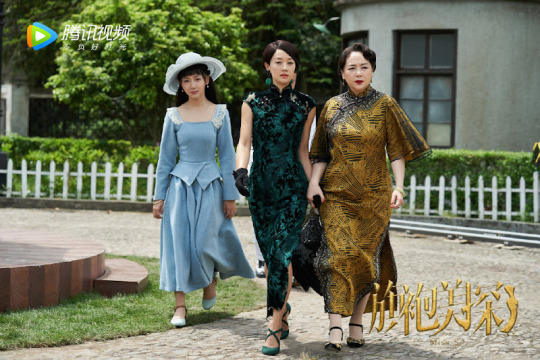
The cheongsam worn by the lady to the far right is kind of legit for the late 20s, but then the protagonist in the middle is wearing a tacky modern cheongsam that just coincidentally looks a bit late 30s. Definitely not intentional though. The "Western" outfit on the lady to the left doesn't resemble anything in Western women's fashion from any decade of the 20th century, and is likely a generic Taobao "vintage" outfit.
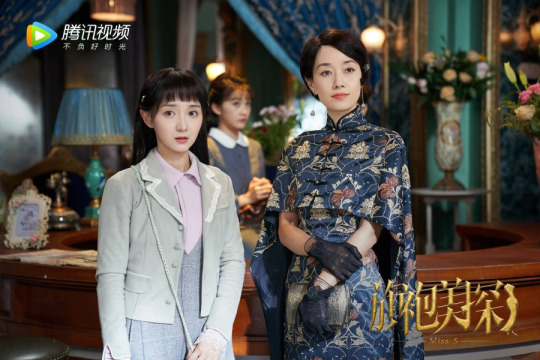
They have a weird obsession with capes which I don't understand. The fit, collar and fabric of the cheongsam are all unusual (in a bad way). The "Western" outfit is again not legit.

Weird cape obsession, weird fabric and fit.
For reference, there was a 1928 film about a lady detective starring Hu Die (女侦探). This is what their costumes look like:

Uhh, so elegant, so classy, so avant garde. I'm swooning.
By the way, I know Miss Fisher's Murder Mysteries is a great show and generally has very good costuming, but they have some instances of characters wearing Chinese fashion and they’re all handled poorly. There is this one episode featuring a female Chinese character and her outfit is just... pure cringe. I know English language info on Chinese historical fashion is rare but, there are quite lot of films and artworks from the late 20s that should give the costumer an idea of how a Chinese girl from that era would've dressed, definitely not the cheap modern cheongsam they put her in. They even had Miss Fisher comment on how that cheap ass dress "must have been her wedding dress" or something. If you wear that to a Chinese wedding in 1929 be prepared to get roasted. I've been wanting to rant about this since I watched the show and finally have the vessel (this hellsite) to do it.

From @phrynefishersfrocks
I couldn’t find that particular episode so here is a complimentary photo of Miss Fisher also in a (highly inaccurate) cheongsam. This is a million miles away from a late 20s cheongsam, and would be more appropriate for a late 40s evening occasion. However, I can assure you this is not because the costumer wanted to put Miss Fisher in a late 40s cheongsam, but simply because they researched late 20s Chinese fashion very poorly (or didn’t bother to research at all, because how dare Chinese people have fashion and not just a single dress that didn’t change for decades).
Miss Fisher could I interest you in a dress like this:
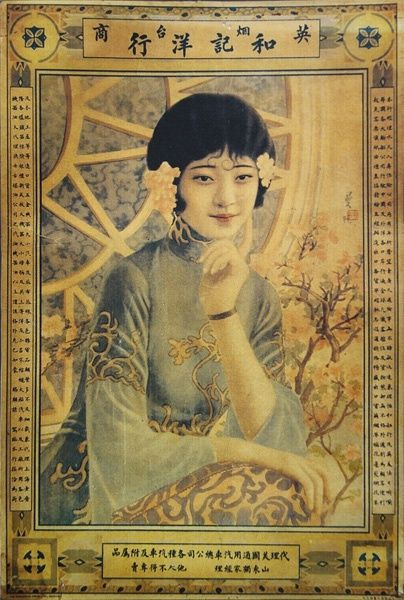
134 notes
·
View notes
Text
Granting You a Dreamlike Review
In my previous post on Granting You a Dreamlike Life, I went over a few early reasons on why it’s a very watchable car-crash, and I saw a few people expressing interest in what I have to say once I have finished the show. Apparently, I have to say quite a bit.
Vague spoilers for the general story with no details. I am adding gifs, but steering clear of spoilery ones.
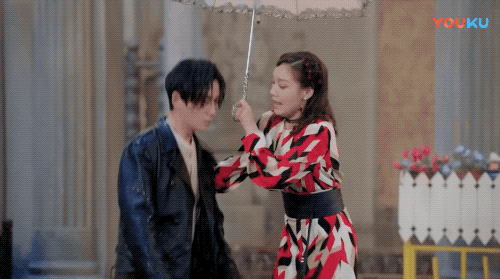
The framing device
On paper, the reincarnation framing device works. Two people meet, we discover that they experienced this epic tragedy in their past lives, then they get to know each other all over again in the twenty first century. It’s a cliche, but there is nothing inherently wrong with that. But, as is the case with most of this drama, it manages to take a sane sounding idea and make it completely incomprehensible.
As it happens, after the viewer witnesses a melodramatically tragic ending to the main story line, they abruptly move to the present time for only about twenty minutes to see reincarnated characters faff around with thematic dumpling making for what appears to be one day, then getting separated for three years, before accidentally meeting again and instantly deciding to be together forever. It’s not just rushed, it feels like a massive let-down.

Say what you may about the writing of the main narrative (I know I will say many things about it), but it does get some things right, and the slow, gradual, logical development of the relationship between Tianying and Luo Fusheng is one of those things. It makes sense, because we see them grow into each other’s orbit, and we witness Fusheng becoming a decent human being under the influence of Tianying. Their future counterparts do absolutely nothing to justify them having this post-death happy ending. We know that they are meant to end up together because they are the protagonists of a romance drama, but there is nothing within the narrative itself that would make it so. To make matters worse, there is this really strange angle where Fusheng’s future self (called, hilariously, Musheng) explains that Tianying’s future self (Jingyun) looks and acts exactly like his dead fiancé, and there is a hint of symbolism there, echoing Lusheng/Tianying’s narrative, but it makes the framing device even more muddled.
Considering that we have spent the overwhelming majority of this show’s runtime with the 1920’s/1930′s characters, I almost wish the writers chose to forgo the framing device completely, and made the ending of the show about the aftermath of the events we saw unfolding, instead of undercutting them.

The main narrative
If I were to make an attempt at summarising most of the show’s 40 episode run, it would go something like this: Dreamlike’s story is centred around family clans still reeling from a big falling out some ten years prior to the events of the show, with the heads of all the clans driving tensions high in the city, and a newcomer mob family threatening the fragile equilibrium. It must be up to the younger generation to make sure that the war does not break out in the city of Dongjiang.
That sounds pretty decent, but, remember, if there is a sane sounding idea then Dreamlike will render it completely incomprehensible.
Setting aside the fact that said misunderstanding, which is meant to be meticulously crafted by one of the parties, completely falls apart if you give it about three seconds thought, Dreamlike’s writers make a questionable decision to clear the misunderstanding at episode 35, resolve the main conflict at episode 36, and then promptly make the story about the last-minute big bad appearing out of the blue. The big bad happens to be the Japanese, led one of the minor characters who was a villain all along. That villain is a Japanese spy, but they live in a Japanese-style house and wear Japanese costume all the time so why they were never discovered is anyone’s guess. As the Japanese were never even mentioned prior to that, a lot of retro-fitting needs to be done to shove them into the narrative, and even more hoops needs to be jumped through to make sure all the characters are involved in the final conflict. The result mostly consists of info-dumps so dense they are quite hard to follow, and narrative twists so severe they lost me completely.
If you think the love hexagon I mentioned in my first set of hot takes was convoluted, the final five episodes are that but on steroids. I spent quite a lot of said episodes pausing, rewinding, and screaming into a pillow.
Again, on paper, all the family clans coming together to unite against the common enemy, does not sound terrible, and there is nothing wrong with the pace escalating dramatically towards the climax of the show. That said, attempting to tell a very dense spy story with no set-up in the span of three episodes is... misjudged. As audience, you start on the back foot trying to catch up with the galloping narrative, and then remain on the back foot until the show runs out of characters to kill on screen.
This also means that while the final stand-down is aiming for this intensely epic tragedy with known characters dropping left and right, it ends up being mostly unintentionally funny. There is one death, notably, that made us heckle and scream-laugh because the motivation for that character checking out was utterly unclear. Unfortunately, only one character death affected me in any way whatsoever, mostly because it was underplayed: there was no slow-motion montage of their life, they did not die in the arms of their loved ones to a guitar riff-filled soundtrack (a strange musical choice for death scenes, whichever way to look at it), they did not weakly monologue about their feelings while spluttering fake blood out of their mouth. They were shot and they fell down, and for the first time in the whole show I felt an emotion that was not amusement.
Why? Because less is more.
Character development.
One thing Dreamlike does reasonably well in terms of its writing is this: it actually spends time making sure its characters develop and grow. It’s not always done well, it’s not subtle, but it’s certainly there. Most prominently, Luo Fusheng growing from this devil-may-care mercurial bad boy into a grounded, sensible head of the family works remarkably well. This is in equal parts due to a reasonable script, and Zhu Yilong’s acting, which I would maintain is not nearly as strong as in his more recent work, but is still head and shoulders above the majority of the cast.

Thankfully, Fusheng’s relationship with Tianying does not develop into a loving one before he starts respecting her wishes, learning to see her as a partner and not a object he can win, and she, in turn, calls him out on his less savoury actions without it becoming negging. They end up grounding each other very nicely, their relationship getting to the point where you, the viewer, see that they are actually good for each other, and root for them to be together, before the two even become a couple. Considering that their story started with Sexual Harassment as Courtship, I am very pleasantly surprised by it developing into something so wholesome. And I still very much like An Yuexi, she is lovely as Tianying.

Xu Xingcheng’s character development, in stark contrast, looks so abrupt it more or less makes him into a hammy comedy villain. Apparently, losing a girl he is obsessed with is enough to make him go full Darth Vader (complete with a cape) and then stubbornly remain that way until his very brief redemption. There is also apparently an amount of scenery chewing that flips a performance from delightful to tedious.

(He is in the Police of the Republic of China, which is basically a short-hand for “evil”. Also I guess we are actually in late 20’s-early 30’s.)
For a show that rushed to bring every character’s narrative to a conclusion (which included writing in a long-missing character with the only intention of killing them on screen) Dreamlike completely fails to bring the stories of its women to any sort of resolution. Tianying, who said that she wanted to be a film star, and to sing again so that she would marry opera and film, did a complete 180 late in the series and just completely abandoned her work.
Lin Xingyuan has not achieved anything whatsoever, even though she was - perhaps, not deliberately - the most reasonable character in the series.
Sidelining Hong Lan was the strangest decision. Not only did she undergo very satisfying character development of her own, growing out of being a spoiled brat and learning to take all sorts of responsibilities, and not only did her story touch heavily on domestic abuse and left that completely unresolved, but Hong Lan had every reason to be involved in the events of the final few episodes to the point where her non-involvement is actually noticeable. She is left behind the scenes with no explanation, her story left hanging in the air. Cheng Yanqiu, who portrayed Hong Lan, is honestly not half-bad, and she was done very dirty by this show.

Building a mystery
One of the biggest narrative questions of the show is Tianying’s true identity.
We get a hint that she is maybe adopted, and perhaps not just a mere orphan either, quite early in the story. Then, there is a scene in which one of family leaders reminiscences about his lost daughter, adding that she would have been twenty two were she alive still. In the very next scene Tianying mentioned that she is a full grown-up twenty two year old.
So, that’s that mystery gone in an instant. The mystery is no more before any other “hints” are dropped, before Significant Jewellery comes into play, and good twenty episode before the backstory gets revealed in full.
And, alright, you may say that maybe it’s not about the audience discovering the truth as much as it’s about the characters doing the same, but if that is the case why oh why does Dreamlike make no less than six explanations of the Significant Jewellery: the person who made it reveals its origin on screen to two different characters, and then rounds are made, explaining it all over again to other characters. In the best traditions of bad screen plays, audience is forced to see every agonising second of something they have known for a long while being explained over, and over, and over again.
Editing and quality control
If you are watching the series on Viki, there is a scene in episode 39 with shots are left unrendered and time-coded, but either this is something that was fixed later on, or this problem was created during subbing, because this issue is not present on Youtube. Which means that the editing team has, in fact, done the barest minimum of their job.
The editing overall is sloppy, and has several quirks that are very noticeable, such as the absolute majority of the scenes being several seconds longer than they need be. It’s true that there is usually a delay between the scene playing out and the director shouting “cut!”, but leaving this dead space in the final product just bogs it down.
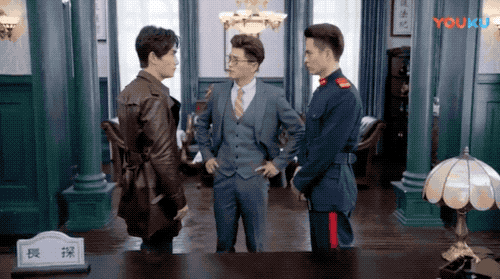
There were also, hilariously, scenes that cut to black and then are brought back to life, as in a choice was made to pad them for runtime and no one bothered to edit transitions. This creates a curious dissonance within the pacing of Dreamlike, which on a macro level is still so fast it makes the story hard to follow, and on the micro level is screechingly slow. If shows could get arythmia, this is what it would look like.
On top of that, there little continuity issues, or colour-grading glitches, or scenes shot across a period of time with no one making sure the light actually matches.
And it’s funny, but it’s also kind of sad. How can you expect me to care about this drama if the people who made it clearly did not?
Action coordination
The action sequences are, for the most part and barring the final confrontation, pretty good.
What?
I am dunking on things that warrant dunking on, and the fights certainly do not.

And yes, one can definitely nitpick them for small mistakes here and there (looking at our boy Zhu Yilong here who decided that grabbing his sword by the blade was a good idea), and the editor certainly does not help, but this show’s stunt coordinator had done a very admirable job, and his stunt team are fairly good as well.
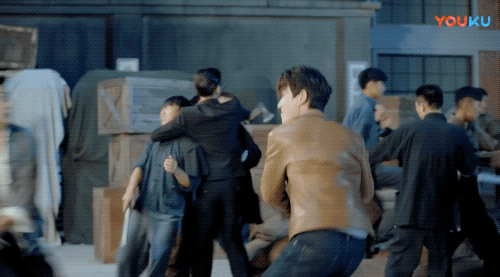
Hero fights - one lone hero against a wave of enemies, that is - are never easy, and Dreamlike manages to pull them off pretty well. More than that: action sequences have a logic to them, they effectively tell a story, they look interesting, and characters shine through the moves. Most notably, Xu Xingcheng’s brawling sequences during his police bootcamp are excellent.
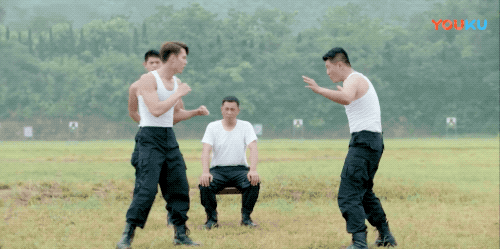
None of the above applies to the final shoot-out. I have nothing good to say about that: it’s geographically confusing, and full of physical impossibilities, which lowers the stakes at every turn, and contributes to the alleged emotional highlight of the series being unintentionally funny. But apart from that one, the fights - especially ones with cold weapons - get a thumbs up from me.
Film industry and misc. observations
Half-way through the series Tianying becomes a film actress. You’d think people working in recorded media would maybe make content that adequately represents their profession.You’d be wrong. Aside from the obvious - they are filming talkies, and there is not a single piece sound recording equipment in sight - there is just so many baffling bits happening on set. From directors throwing away the script and just letting their cast run completely unsupervised, to venting your own personal grievances through the scenes (not okay), to waking away from the set (super not okay), to spewing utter nonsense about acting as a profession. You really feel for the cast that has to deal with all this with straight faces.

It’s pretty funny how there is a scene where Tianying is bullied into performing multiple takes in which she has to drink alcohol. The narrative significance of the scene is that we see that one fellow cast member treats her poorly while another has her back, but on a meta level…
Is this not a very clear illustration why the cast should not be forced to drink alcohol on set? Especially in the scenes that feature intimacy or fight choreography? The show hits it on the nail with it being a bad idea and then proceeds to do it to itself.
I know it’s not a Dreamlike feature as much as just a Cdrama feature (and perhaps on the wider scale an East Asian television feature), but every time I really feel for the cast when they do it.

Dreamlike does quite often substitute hard liquor for either the strange yellow liquid or flat beer. Needless to say I preferred the former - not only because it’s likely to be non-alcoholic, but also because it does not foam when being thrown around.
So. This was Dreamlike.
I could say more, but I’ll stop here.
Dreamlike was pretty bad, but I enjoyed it even though it made me scream and despair. I kept coming back even after I rage-quit watching it a couple of times.
Incomprehensibly, I don’t regret spending some thirty hours of my life on it. That said, I feel a strange sense of relief knowing I am finally well and truly done with this drama.
----
Side notes.
Next up, the Rebel! I have been very busy and unable to catch up properly, but there will definitely be thoughts on that because what I have seen was stunning.
Oops this is now accidentally a review blog.
(Guardian recaps are not dead, I just had a very hectic couple of weeks with work and such so it’s a little involuntary hiatus. I am half-way through drafting Episode 14, so it will be here eventually.)
32 notes
·
View notes
Text
*Alcina is the oldest, and actually (most irritatingly to her) the closest in age to Miranda by only a year or two.
*Moreau was the second one changed. His family were doctors, and before communism hit Romania, and the doors of the village were locked down, he actually was a fisherman on the Black Sea.
Moreau has a history in the medical field (however, based on his literary counter part, he was not the most *ethical* doctor). Fishing came first, but he was called back by his family and was taken by Mirada.
*Karl was born around 1930's or 1940's. He was kidnapped at an early age(before 10) by Miranda. His father was known to Miranda, as both were native to the village. His mother was an outsider from Germany, and Jewish.
He has fond (if vague) memories of his mother, and can still speak a somewhat broken Hebrew but would prefer not to (the food and language are painful memories for him).
*Donna is technically the youngest, having canonically been brought into the family after 1996.
*Given the rise of Christianity after the assimilation of the native Dacian, Miranda was raised Christian.
*Due to her upbringing in the early 1900's - 1920's, Mirandas evocation of Christian idolatrous images are because she genuinely has warped her thinking into believing herself a God /Patron Saint of the village.
*She is obsessed with power. Sure her daughter is important, but it's subconsciously about controlling life and death.
#Alcina Dimitrescu#Karl Heisenberg#salvatore moreau#donna beneviento#resident evil village#re8#resident evil 8#resident evil
13 notes
·
View notes
Photo
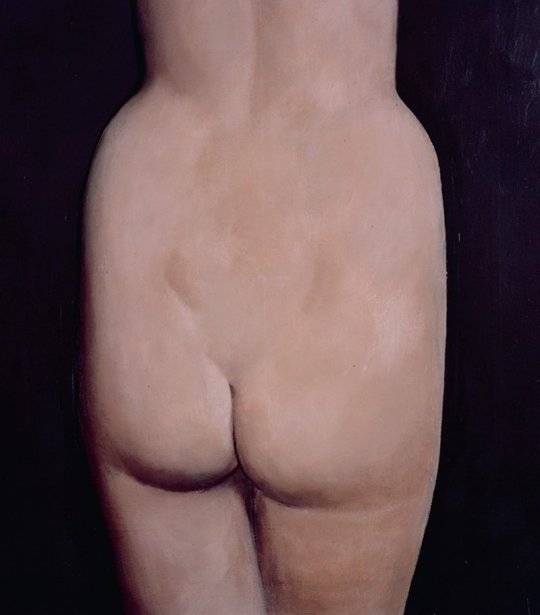
The nude stripped bareThe history of the body DAVID RIMANELLI
‘To be naked is to be deprived of our clothes, and the word implies some of the embarrassment most of us feel in that condition. The word nude, on the other hand, carries, in educated usage, no uncomfortable overtone.’ So wrote Kenneth Clark in A Study in Ideal Form. David Rimanelli argues that some artists have blurred this distinction. From Félix Vallotton to John Currin.
Kenneth Clark begins his classic treatise The Nude: A Study in Ideal Form by making a distinction between the naked and the nude: “The English language, with its elaborate generosity, distinguishes between the naked and the nude. To be naked is to be deprived of our clothes, and the word implies some of the embarrassment most of us feel in that condition. The word ‘nude’, on the other hand, carries, in educated usage, no uncomfortable overtone. The vague image it projects into the mind is not of a huddled and defenseless body, but of a balanced, prosperous and confident body: the body re-formed.” It has often been asserted that Modernism begins with Manet, in particular with those paintings wherein the vexations of the unclothed female body burst forth with a power of disquietude that appalled the public: Le Déjeuner sur l’herbe 1863 and Olympia 1863. The former picture had been exhibited at the Salon des Refusés, “to that extent, officially beyond the pale of art”, as another Clark – T.J. Clark – remarks in his essay Olympia’s Choice, whereas Olympia was the shocker of the official Salon of 1865. Both paintings display an uncertainty about the status of the nude female figure, an uncertainty that points perhaps towards Kenneth Clark’s distinction between the naked and the nude. These women fail to sustain the idealisation of the nude, slipping decisively into the embarrassing (for some) terrain of the naked. In other words, Manet deprives his models of the acceptable academic veneer of classical nudity, forcing them into the modern age, a naked age, disturbingly and yet ambiguously contemporary.
T.J. Clark continues his analysis by examining the silence of the contemporary Parisian critics concerning the obvious source of Olympia (Titian’s great nude, The Venus of Urbino, 1538), compared with their open acknowledgement of the source for Le Dèjeuner sur l’herbe (a work of Titian that was commonly attributed to Giorgione in the nineteenth century and known as the Fête champêtre, c.1510–11): “Critics certainly came to laugh at its mistakes and incoherences, and yet the best way to do so was to point out what Manet’s picture derived from - and how incompetently… But in 1865 none of this took place. If the revisions of the Venuscould be seen at all, they could not be said.” He goes on to say:”The past was travestied in Olympia: it was subject to a kind of degenerate simian imitation, in which the nude was stripped of its last feminine qualities, its fleshiness, its very humanity, and left as ‘une forme quelconque’ – a rubber-covered gorilla flexing its hand above its crotch.”
The complexity of Clark’s analysis of the reception of Olympia does not bear treatment in a short essay. Suffice to note that a crisis in the depiction of the nude was already, in his view, well underway in the academic nudes of the Salons - the vacuous, silly, trashy Venuses and nymphs of Cabanel, Bouguereau and Gèrôme, to cite only three relatively more distinguished examples – and that the scandal of Olympia was indeed her modernity, a prostitute plainly and unapologetically, rather than a fille de la rue gussied up as Phrynè or Danaë.
Kenneth Clark’s remarks on Olympia are much more modest, but still adumbrate the radical break that Manet’s painting constitutes:”The Olympia is a portrait of an individual, whose interesting but sharply characteristic body is placed exactly where one would expect to find it. Amateurs were thus suddenly reminded of the circumstances under which actual nudity was familiar to them, and their embarrassment is understandable.” Those amateurs would be understandably embarrassed to see nakedness in such familiar circumstances: in a brothel, where they are paying clients.
If the naked and the nude as archetypes stand at the outset of Modernism, then both became thoroughly discredited and disposed of by Modernism’s end. And yet the unclothed figure persisted in certain forms. Félix Vallotton had been a member of the avant-garde Nabis group in the last decade of the nineteenth century, and in such paintings as Femme nue assise dans un fauteuil 1897 and Femmes nues aux chat c.1898 he subjected the nude to the flattening and the unnaturalistic colourations that were also typical of his compeers Bonnard, Denis Sèrusier and Vuillard. But by the first decade of the twentieth century, his nudes begin to change. From the vantage of Modernist criticism and art history, they degenerate, becoming, on the whole, more academic. Yet with hindsight we can discern in Vallotton’s later nudes – and there are many of them – characteristics that render them very contemporary. Nu assis 1910 is stunningly prescient with respect to John Currin’s nudes of the 1990s. This woman looks very much like a stout bourgeoise, and her no-nonsense hairdo attests to her conventional background: no glowing, flowing tresses here, no savage, Baudelairean chevelure . Her face is ordinary, her expression smiling and bland; at best she’s jolie laide. But Vallotton does play oddly with the colouration of her flesh, a hint perhaps of his Nabis past. The flesh tones of the body are those of the morgue, grey and purple; the face, however, looks flushed, reddened, desirous, horny. The Nu assis is a sexed-up corpse, a banal succubus. Were the trappings of the exotic or supernatural more in evidence – as they are, for instance, in the nudes of Gustave Moreau or Fernand Khnopff – Vallotton’s odalisque would appear more acceptable and less disconcerting, because she would belong to a readily identifiable fin-de-siècle feminine typology.
John Curin Bea Arthur Naked 1991 Private collection, courtesy Gagosian Gallery
Vallotton’s Nu assis wreaks havoc on the idealised nude, but she doesn’t quite adhere to Clark’s description of the naked. Instead, wavering between academicism and almost gross realism, she comes off as a sly parody. She appears comfortable and confident in the amplitude of her dead flesh.The Nu allongè au tapis rouge1909 likewise plays fast and loose with the conventions of the nude. Writing of Boucher, Kenneth Clark notes: “The Venus of the dix-huitième extends the range of the nude in one memorable way: far more frequently than any of her sisters, she shows us her back. Looked at simply as form, as relationship of plane and protuberance, it might be argued that the back view of the female body is more satisfactory than the front. That the beauty of this aspect was appreciated in antiquity we know from such a figure as the Venus of Syracuse. But the Hermaphrodite and the Callipygian Venus suggest that it was also symbolic of lust.” In the Nu allongè, Vallotton explicitly alludes to the hermaphroditic figure and the many nudes that borrow its pose; for example,Velásquez’s Rokeby Venus and Boucher’s Miss O’Murphy.”Freshness of desire has seldom been more delicately expressed than by Miss O’Murphy’s round young limbs,” comments Clark with the barest hint of prurience, “as they sprawl with undisguised satisfaction on the cushions of her sofa.” Vallotton’s nude is less fresh, more prurient. As with the Nu assis of the following year, his Nu allongè displays a visual incoherence in the handling of the flesh tones. In this instance, the torso and swelling buttocks are of a mostly chalky white hue, while the face and the hands are curiously flushed. The face and hairstyle again do not suggest the comfortable distance of antique references, but are very much of a contemporary moment.
This is the Venus of a weekday afternoon tryst, a Céleste or Marie of the Parisian banlieues, having just refreshed her maquillage and awaiting her paramour. The face itself is weird, deliquescent; one eye looks like it’s about to slip with slatternly languor from its very socket. Her feet are very heavily shadowed, but the effect is simply that they are dirty.
Vallotton’s loyalty to the nude as subject remains constant until his death in 1925. It comes as no surprise that these paintings have been largely ignored, compared with the works of his Nabis period. Sometimes they are just bad, as with the Vènus marine 1913, a clumsy, ludicrous blond on the half shell, her expression wavering between vacancy and, perhaps, bitchiness. She’s a spoiled mondaine who travesties the goddess she purportedly embodies. But paintings such as this presage the later works of the Modernist agent provocateur Francis Picabia. Indeed, while Vallotton’s later nudes have remained obscure, recently it seems that Picabia’s “bad” figurative paintings of the 1930s and 1940s have achieved a prominence virtually eclipsing his acceptable Dadaist travesties of the teens and 1920s.’Dear Painter, paint me…’, an exhibition mounted at the Centre Pompidou in 2002, bore the subtitle ‘Painting the Figure since late Picabia’. Alison Gingeras, one of the curators, wrote:”Beginning with Francis Picabia’s late nudes from the early 1940s, the question of painting as a filter of mass media’s impact on both individual and collective sense of identity has emerged as a key preoccupation of the artists in the exhibition.” Among them were Sigmar Polke, Martin Kippenberger, Neo Rauch, John Currin, Luc Tuymans and Elizabeth Peyton.”These notorious paintings - shunned for their ‘regression’ into realism and their embrace of kitsch - drew their pictorial source from tawdry black and white photographs culled from soft-core pornography magazines.”Picabia’s Portrait de Suzy Solidor (1933) is an early example of this kitsch revanchism. Anatomically bizarre, his Suzy Solidor, with her heavy blue mascara and smiling, parted red lips, also suspires an unmistakable prurience; the crude, dirty shadows outlining her legs and arms betoken a dirtiness of another sort. Suzy Solidor may yet be recuperated as a Dadaist travesty. The somewhat more competent albeit trashy technique of Femmes au Bulldog, Deux amies and La brune et la blonde (all 1941–2) if anything renders these pictures more scandalous: rude, crude and dangerous to know. Picabia’s lewd nudes may lend a certain contrarian Modernist lineage to the work of John Currin, but one wonders if Currin, so conversant in the art of the Old Masters, is at all familiar with Félix Vallotton? I’ve already mentioned the Nu assis as an extraordinary precursor for Currin’s own “bad” nudes, and I could easily add Le Printemps 1908, an especially ugly and stupid-looking evocation of Primavera. But the most astonishing comparison is between Vallotton’s Etude de fesses c.1884 and Currin’s Bottom 1991. The corporeality of the Vallotton buttocks is almost repulsive as he expends all his resources of painterly technique on the depiction of stretch marks and cellulite. Currin’s painting, on the other hand, seems relatively restrained, evincing an almost Cycladic elegance and symmetry. Scarcely the sort of conclusion one would expect? Even in the case of one of Currin’s most deservedly famous, or notorious, early paintings, Bea Arthur Naked 1991, the sitcom star preserves a certain restraint, dignity even, that militates against the overtly camp/kitsch (or possibly anti-feminist) readings of the picture that so readily come to mind. Perhaps the Arthur portrait is going rather against the grain of the Currin mode, even as it was only coalescing in the early 1990s – the exception that, maybe, proves the rule of perversion. This cannot be said for Vallotton’s nudes – distorted, freakish, moribund and whorish in multifarious variations.
12 notes
·
View notes
Text
Working Toward the Führer
I was inspired by a tweet by @nycsouthpaw to read Ian Kershaw's well-known essay "Working Toward the Führer": Reflections on the Nature of the Hitler Dictatorship. I was not disappointed; Kershaw gives a compelling analysis of the internal workings of a particular kind of authoritarian regime. In the interests of space, I will not quote the whole thing, so you will need to read the original for Kershaw's observations on Stalin, Max Weber, succession planning, and other peripheral topics. But a number of passages about Hitler and how he ruled struck me as quite illuminating.
Kershaw opens by observing how detached Hitler was from the work of running a government:
Hitler's way of operating was scarcely conducive to ordered government. Increasingly, after the first year or two of the dictatorship, he reverted to a lifestyle recognisable not only in the party leader of the 1920s but even in the description of the habits of the indolent youth in Linz and Vienna recorded by his friend Kubizek. According to the post-war testimony of one of his former adjutants:
Hitler normally appeared shortly before lunch, quickly read through Reich Press Chief Dietrich's press cuttings, and then went into lunch. ... When Hitler stayed at Obersalzberg it was even worse. There, he never left his room before 2.00 p.m. Then, he went to lunch. He spent most afternoons taking a walk, in the evening straight after dinner, there were films. ... He disliked the study of documents. I have sometimes secured decisions from him, even ones about important matters, without his ever asking to see the relevant files.
He preferred to act by personal fiat, relying on individuals rather than on institutions:
Hitler seems to have had no deliberate policy of destabilisation, but rather, as a consequence of his non-bureaucratic leadership position and the inbuilt need to protect his deified leadership position by non-association with political infighting and potentially unpopular policies, to have presided over an inexorable erosion of 'rational' forms of government. And while the metaphor of 'feudal anarchy' might be applied to both systems, it seems more apt as a depiction of the Hitler regime, where bonds of personal loyalty were from the beginning the crucial determinants of power, wholly overriding functional position and status.
The almost inevitable result of this management style was that his administration existed in a perpetual and increasing state of chaos:
I have just used the word 'system' of Nazism. But where Soviet communism in the Stalin era, despite the dictator's brutal detabilisation, remained recognisable as a system of rule, the Hitler regime was inimical to a rational order of government and administration. Its hallmark was systemlessness, administrative and governmental disorder, the erosion of clear patterns of government, however despotic.
This was already plain within Germany in the pre-war years as institutions and structures of government and administration atrophied, were eroded or merely bypassed, and faded into oblivion. It was not simply a matter of the unresolved Party-State dualism. The proliferation of 'special authorities' and plenipotentiaries for specific tasks, delegated by the Führer and responsible directly to him, reflected the predatory character and improvised techniques immanent in Nazi domination. Lack of coherent planning related to attainable middle-range goals; absence of any forum for collective decision-making; the arbitrary exercise of power embedded in the 'leadership principle' at all levels; the Darwinian principle of unchecked struggle and competition until the winner emerged; and the simplistic belief in the 'triumph of the will', whatever the complexities to be overcome: all these reinforced each other and interacted to guarantee a jungle of competing and overlapping agencies of rule.
He was able to be a such a weak head of government because his base of support wasn't dependent on the quality of his administration:
Since the mid-1920s, ideological orthodoxy was synonymous with adherence to Hitler. 'For us the Idea is the Führer, and each Party member has only to obey the Führer,' Hitler allegedly told Otto Strasser in 1930. The build-up of a 'Führer party' squeezed heterodox positions onto the sidelines, then out of the party. By the time the regime was established and consolidated, there was no tenable position within Nazism compatible with a fundamental challenge to Hitler. His leadership position, as the font of ideological orthodoxy, the very epitome of Nazism itself, was beyond question within the movement. Opposition to Hitler on fundamentals ruled itself out, even among the highest and mightiest in the party. Invoking the Führer's name was the pathway to success and advancement. Countering the ideological prerogatives bound up with Hitler's position was incompatible with clambering up the greasy pole to status and power.
And yet, despite Hitler's incompetence at pulling the levers of formal governmental power, he was quite successful at getting the state to do the insane things he wanted. Kershaw points to three mechanisms: Hitler was a unifier, an activator, and an enabler. First, he was a symbolic and ideological figurehead for his supporters:
As unifier, the 'idea' incorporated in the quasi-deified Führer figure was sufficiently indistinct but dynamic to act as a bond not only for otherwise warring factions of the Nazi Movement but also, until it was too late to extricate themselves from the fateful development, for non-Nazi national-conservative elites in army, economy and state bureaucracy. It also offered the main prop of popular support for the regime (repeatedly giving Hitler a plebiscitary basis for his actions) and a common denominator around which an underlying consensus in Nazi policy could be focused.
Second, he energized them to act out on their own:
As activator, the 'vision' embodied by Hitler served as a stimulant to action in the different agencies of the Nazi Movement itself, where pent-up energies and unfulfilled social expectations could be met by activism carried out in Hitler's name to bring about the aims of Leader and Party. But beyond the movement, it also spurred initiatives within the state bureaucracy, industry and the armed forces, and among the professionals such as teachers, doctors or lawyers where the motif of 'national redemption' could offer an open door to the push for realisation of long-cherished ambitions felt to have been held back or damaged by the Weimar 'system'. In all these ways, the Utopian 'vision' bound up with the Führer -- undefined and largely undefinable -- provided 'guidelines for action' which were given concrete meaning and specific content by the voluntary 'push' of a wide variety of often competing agencies of the regime.
Third, he used his power to ratify their actions:
Perhaps most important of all, as enabler Hitler's authority gave implicit backing and sanction to those whose actions, however inhumane, however radical, fell within the general and vague ideological remit of furthering the aims of the Führer. Building a 'national community', preparing for the showdown with Bolshevism, purifying the Reich of its political and biological or racial enemies, and removing Jews from Germany, offered free licence to initiatives which, unless inopportune or counter-productive, were more or less guaranteed sanction from above. The collapse in civilised standards which began in the spring of 1933, and the spiralling radicalisation of discrimination and persecution that followed, were not only unobstructed but invariably found legitimation in the highest authority in the land.
The title of the essay comes from a remarkable quote from "the sentiments of a routine speech from a Nazi functionary in 1934":
Everyone who has the opportunity to observe it knows that the Führer can hardly dictate from above everything which he intends to realise sooner or later. On the now contrary, up till now everyone with a post in the new Germany has worked best when he has, so to speak, worked towards the Führer. Very often and in many spheres it has been the case -- in previous years as well -- that individuals have simply waited for orders and instructions. Unfortunately, the same will be true in the future; but in fact it is the duty of everybody to try to work towards the Führer along the lines he would wish. Anyone who makes mistakes will notice it soon enough. But anyone who really works towards the Führer along his lines and towards his goal will certainly both now and in the future one day have the finest reward in the form of the sudden legal confirmation of his work.
I found this to be one of the most illuminating things I have ever read on the dynamics of the Trump administration.
5 notes
·
View notes
Text
“I Wish to the Devil the Country was Prepared”
In early January 1932, Robert E. Howard in a letter to H. P. Lovecraft had this to say:
“I love peace, yet I wouldnt [sic] mind a war right now such a hell of a lot, if the country was prepared; but it isnt [sic]. Japan knows it; that’s why she thinks she can kick the flag around, beat up American officials, and get away with it. I wish to the devil the country was prepared.”
This comment was in relation to Japan’s recent seizure of Manchuria in late 1931. Historians often view this as the first shot that would lead to World War 2.
I recently read Cry Havoc: The Arms Race and the Second World War 1931-1941 by Joe Maiolo. It fits in with After the Trenches by William O. Odom, Linn’s Guardians of Empire, and Geoffrey Perrett’s There’s a War to be Won.
Maiolo makes the case that Stalin’s First Five Year Plan set off the 1930s arms race that led to WW2. The Japanese made a gamble to grab Manchuria before the Red Army was modernized and too powerful.
Robert E. Howard was correct. The U.S was not in a good condition to fight a war. But then again, that is the condition it generally goes into war. In 1932, the U.S. Army had 133, 200 men. The National Defense Act of 1920 called for 17,000 officers and 280,000 enlisted men. The National Guard was to be at 435,000 men.
The U.S Army had received no new equipment after WW1. In the 1930s, it was still using the British Mark VIII “Liberty” tank and had 950 French Renault FT-17 made under license. The Renault FT-17 was used up through the 1930s so in terms of quality, not at a disadvantage.
Renault FT-17 Tank
There were designs on the books for new artillery such as the 105 mm howitzer but in 1932, the Army was still using 75 mm and 155 mm cannons of WW1 vintage. Mortars were 3 inch trench mortars with often faulty ammunition due improper storage.
What the U.S. Army had plenty of were around 2 million M1917 Enfield rifles in Cosmoline. During WW1, Winchester, Remington, and Eddystone could produce Enfields in far greater numbers than Springfield Armory with the Springfield ’03 rifle. Corporal (later Sergeant) Alvin York used the M1917 Enfield on that October day in 1918 where he picked off one German after another. Most U.S. Army units in WW1 carried Enfields.
The Enfield was accurate but long (46.25 inches). It does have that short and smooth action the Enfield series of rifles is known for. Some had been sold to the civilian market, but the supply seemed inexhaustible. They were used in basic training during WW2. In the late 1930s, the Army sold around 40,000 a year to the Philippine Commonwealth for the army that Gen. Douglas MacArthur was supposed to create. Enfields were also sold to the Free French, Nationalist Chinese, Irish Free State, and the Royal Netherlands Indies Army. I have seen pictures of stacks of Enfields handed out to Philippine guerrillas in WW2. Some were sent to Britain after Dunkirk. Rear echelon troops such as Signal Corps in the Pacific had Enfields late in WW2. All the M-1 carbines were being sent to Europe. The M1917 is still in use by the Sirius Dog Sled Patrol in Greenland. The Patrol is an elite unit of the Danish Navy. The M1917 works in extreme cold conditions.
M1917 Enfield
The official rifle of the U.S. Army in 1932 was the Springfield ’03. The Army had somewhere around 800,000 of those left over from WW1. It is an accurate rifle owing its action to the Mauser.
The U.S. Army had 102,174 Browning Automatic Rifles from WW1. Ever talk to WW2 vets, they liked the BAR. It was heavy, weighing around 19 lbs. It was originally designed for suppressing fire crossing no-man’s land. Bonnie and Clyde used BARs and did Frank Hamer who took out Bonnie and Clyde. Foreign especially British writers hate the BAR calling it a poor light machine gun. It was used sort of as an LMG but gave a rifle squad a little more fire power. The Marines had two BARS per rifles squad in WW2.
Browning Automatic Rifle
The M1919 Browning machine gun began service right after WW1 and used up through Vietnam. John Moses Browning was a firearms genius.
Browning M1919 Machine Gun
The Thompson submachine gun was not adopted until 1938 by the U.S. Army but in use by the Navy and Marines. So, overall, the U.S. was in similar condition to all other great powers following WW1 with small arms.
The biggest problem is the U.S. Army had no large-scale training exercises during most of the 1930s due to lack of funding. Gen. Douglas MacArthur fought tooth and nail to keep the Army from being further by Roosevelt but money was not present for training.
A bright spot is the Army Air Corps. The Air Corps took 20% of expenditures in 1933. The U.S. at least kept up with new designs of aircraft and some purchases. The Curtis P6-E Hawk would have been the standard “pursuit” plane in those last years of bi-wing airplanes.
Out of 133,200 men, 25% of the U.S. Army was overseas. The old thinking of garrisons strewn across colonial empires ready to deal with any local emergencies. U. S. Army strength overseas:
Philippines: 11,744 (5207 Army, 6537 Philippine Scouts). Three infantry regiments, four coast artillery, one cavalry regiments, two field artillery regiments.
Hawaii: 14,223. The Hawaiian Division (“The Pineapple Army”) and coast artillery.
Alaska: two understrength companies at Juneau.
Panama: 2 infantry regiments, 2 coast artillery regiments, 1 battalion field artillery
Tientsin, China: 15th Infantry Regiment at 2 battalions
Puerto Rico: 65th Infantry Regiment.
Another 20% of the U.S. Army was on the Mexican border. The 2nd Infantry Division was kept at full strength at Ft. Sam Houston in San Antonio, Texas. The 1st Cavalry Division at Ft. Bliss, Texas at 9,595 men; the 24th Infantry Regiment, one of the Army’s two black infantry regiments was at Ft. Huachuca in Arizona on the border.
The Washington Treaty of 1922 restricted the U.S. Navy. The Navy had 11 battleships, 3 fleet carriers, 19 cruisers, 102 destroyers, 55 submarines for two oceans. The Navy had 93,384 personnel.
The U.S. Marines stood at 16,561. The Marines were scattered from Shanghai in China to Cuba in small detachments. The 4th Marine Regiment had been in Shanghai with two battalions. The North China Marines fluctuated between 200-300 men at this time.
North China Marines
REH to HPL, 1932: “Along the Border there is a definite undercurrent of expectation, or at least apprehension, of Mexican invasion in case of war. There has been a persistent rumor, every [sic] since the last war, of the mysterious presence and vaguely sinister activities of a hundred thousand Japanese in the interior of Mexico.”
The Mexican Revolution from 1910-1920 gets most historical press. Mexico continued to have turmoil through the 1920s and 30s. Some were regional military commander led revolts against downsizing. The Yaqui Indians in northern Mexico fought the Mexican government 1926-27. There was the Cristero Rebellion 1927-29 and Cedillo Rebellion 1938-39.
Closer to home for Robert E. Howard was the San Diego Plan of 1915. Named after the small town of San Diego in southern Texas, the manifesto stated:
“On the 20th day of February, 1915, at two o’clock in the morning, we will arise in arms against the Government and Country of the United States of North America, ONE AS ALL AND AS ONE, proclaiming the liberty of individuals of the black race and its independence of Yankee tyranny which has held us in iniquitous slavery since remote times.”
In the summer of 1915, Mexican rebels and bandits (Sedicionistas) launched 30 raids against targets carried from across the Rio Grande River. The Seditionistas killed almost two-dozen U.S. citizens including kidnapping, torturing, and decapitating a U.S. soldier displaying his head on a pole in the border. The Anglo-Texan response was with extreme prejudice including extra-judicial executions in retaliation. Robert E. Howard would have been nine years old during these events.
The 2nd Infantry Division and 1st Cavalry were kept at full strength through the 1920s and 30s ready to deal with Mexico.
Could war have happened in 1932? The U.S. was so weak militarily that Japan contemptuously went about its aggression with little fear. The U.S. simply could not intimidate Japan. There was a chance of a clash with the North China Marines at Peking and the 15th Infantry Regiment at Tientsin sparking a wider war. The Japanese could have taken out scattered, isolated U.S. detachments in China, Philippines, and even Hawaii.
The plan was for the U.S. Navy to rush to relieve the Philippines in War Plan Orange while the Philippine garrison retreated to the Bataan peninsula and Corregidor island. It was thought it would take the Japanese six months just to cut through the jungle to get to American lines.
A daring attack by the Japanese on Panama could have put the canal out of use. Opportunistic politicians or generals in Mexico under Japanese encouragement could have attacked along the U.S.–Mexico border in the hope of regaining the South West. The Japanese could have trainers and advisors with the Mexican Army. They even could have a regiment of infantry to stiffen up their allies.
The U.S. could find itself with almost 25% of its army gone and another 20% desperately holding the border with no new tanks, no new artillery. It would take around eight months before you get the skeletal army and National Guard divisions filled out and trained. The Army at least had lots of rifles in storage. There were over 2 million WW1 veterans. A fair number would have been still young enough and in acceptable physical shape to provide a trained reserve to draw upon.
American industry would be able to supply plenty of trucks and other vehicles but things like tanks and cannons would take time.
Curtis P-6 Hawk
The Army Air Corps first monoplane P-26 fighter was a year away from first deliveries and the B-10 bomber two years. The Curtis P-6 Hawk, the last biplane used by the Army Air Corp would have been the plane used along the Mexican border and patrolling the West Coast.
Perhaps some sort of new tank would have been produced. An imaginary tank linking the WW1 leftovers and the M-2 tank of the late 1930s could have been produced.
The Japanese Navy could sail at will along the California coast shelling Los Angeles and San Francisco. There would not be much the U.S. could do about it for a while. In the long run, the U.S. would pummel Mexico into submission. A young Robert E. Howard joins up in the Texas National Guard (36th Infantry Division) or the Army to give the Mexicans and Japanese hell.
If there were an opportune time for the Japanese to attack, it would have been around 1936-1937. The U.S. Army would have another four years of deteriorating equipment and financial starvation. Franklin Roosevelt had taken officers out of active duty for one of his New Deal programs. They ran Civilian Conservation Corps camps. The U.S. was lucky in that a generation of young men were in a quasi-military environment providing pre-basic training. Roosevelt admired Mussolini and Stalin’s central controlled economies and emulated them. Hitler had very similar camps for German youth at the same time.
The U.S. was lucky in that when war came, a new generation of planes, tanks, rifles, vehicles were coming off the assembly lines. The Japanese and Italians were off by 10 years. Both had up modern armies for the early 1930s. Involvement in wars during the 30s delayed modernization giving the Allies the upper hand.
A war in 1932 would have looked a lot like something at the end of WW1 with bolt action rifles, bi-planes, primitive tanks. The 1st Cavalry Division would have been on horseback on the border with some old armored cars confined to the probably few functioning roads in northern Mexico. The Marines might have made a landing at Veracruz with a thrust to Mexico City to put an end of that part of the war. The expanding army would have made its mistakes and growing pains in Mexico. The .30-06 cartridge used in the ’03 Springfield, M1917 Enfield, and Browning Automatic Rifle was perfect for fighting in the open territory of the border. If Mexico did not join with Japan, there would have been a period of just some naval clashes for up to two years. The Japanese might have invaded Alaska making for a scenario of warfare in polar conditions.
The fleet would begin the hard fight across the Pacific as laid out in various versions of War Plan Orange would get underway ending with a blockade of Japan. By the 1930s, Navy admirals had a realistic view of a Pacific War with an island-hopping campaign through the Japanese Mandate islands including the Marshall and Caroline Islands. The Army said it could hold out in the Philippines for 6 months, the Navy estimated a two-year campaign across the Pacific to get the Philippines. So, the Army commander of the Philippine Department would be surrendering before help arrived. It was a command that few relished.
The U.S. could have trained Chinese troops to tie down the Japanese Army. Who knows, the Soviets might have joined in taking Manchuria from Japan once the war turned.
A war in 1932 with Japan and Mexico is an interesting topic. Gen. Douglas MacArthur was Chief of Staff of the U.S Army so there would be drama to the conflict. Who knows, maybe Grandpa Theobald would have volunteered as an ambulance driver like he tried to do in WW1.
“I Wish to the Devil the Country was Prepared” published first on https://sixchexus.weebly.com/
2 notes
·
View notes
Photo
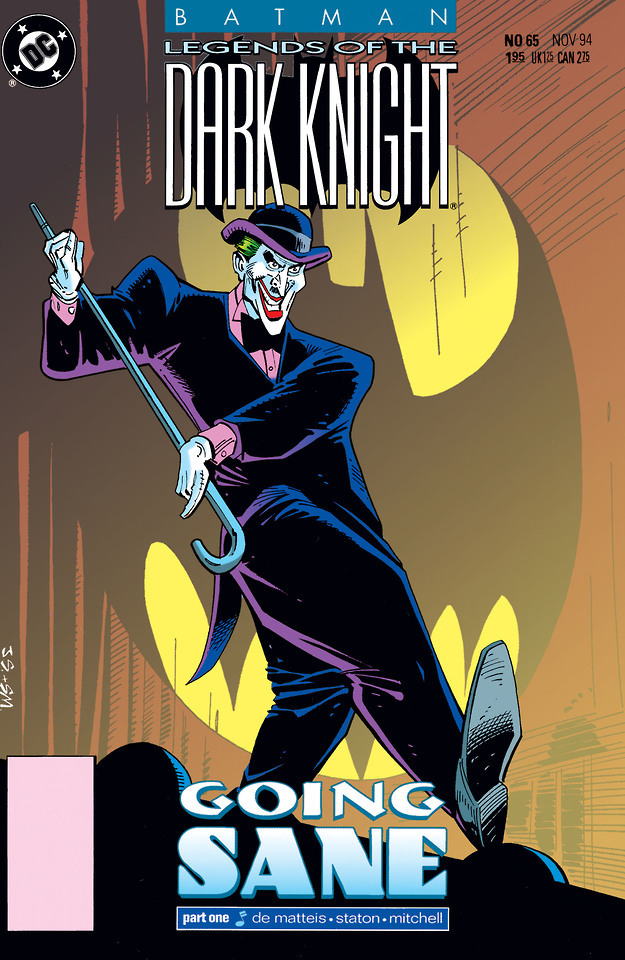
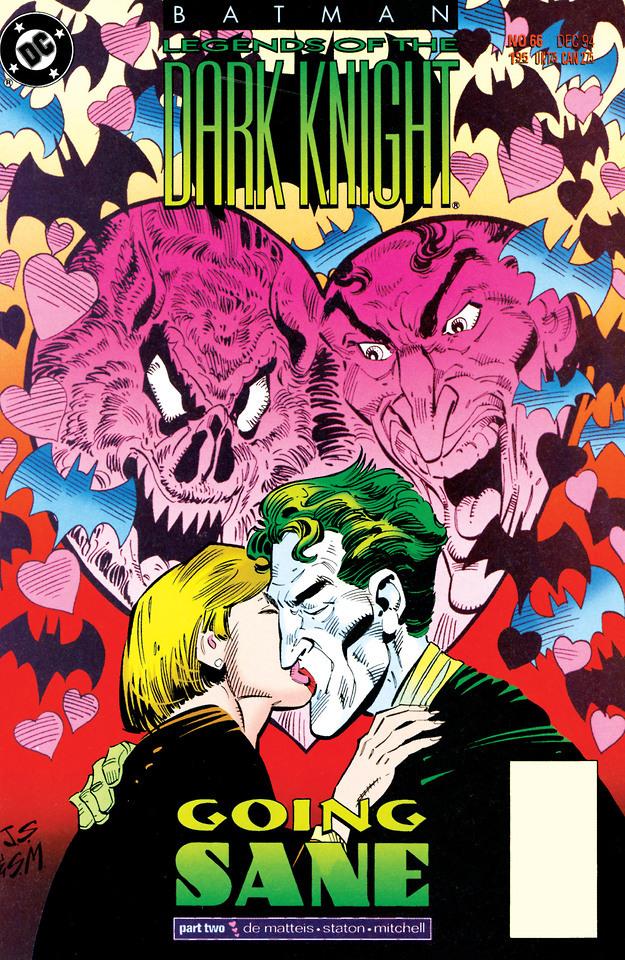

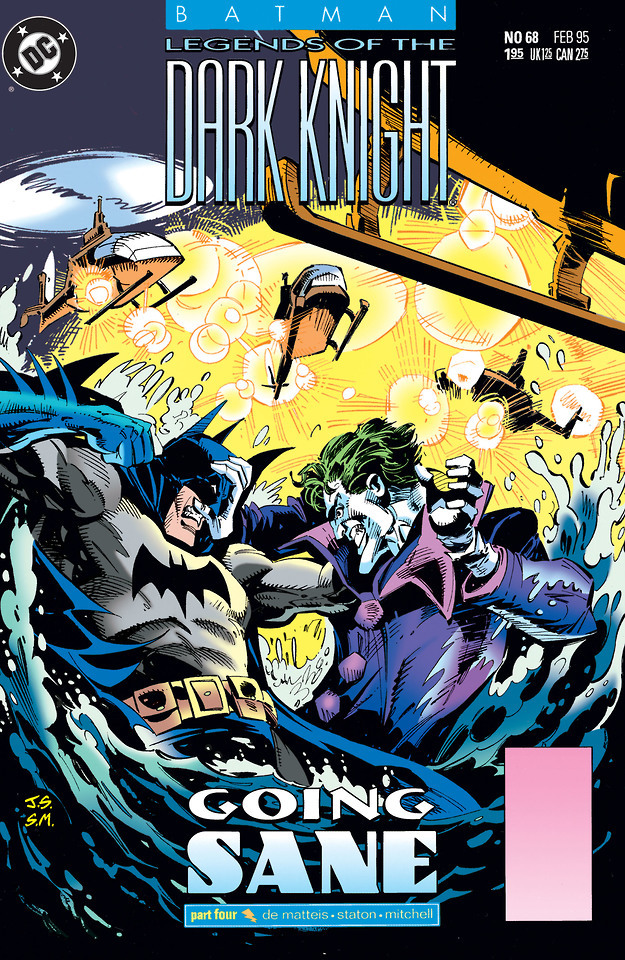
BATMAN: LEGENDS OF THE DARK KNIGHT #65-68 NOVEMBER 1994 - FEBRUARY 1995 BY JOHN MARC DEMATTEIS, JOE STATON, STEVE MITCHELL AND DIGITAL CHAMELEON

SYNOPSIS (FROM DC DATABASE)
On a bright sunny February Saturday in the neighborhood of Park Ridge, the citizens of Gotham City are treated to a passing parade. The people are especially into a clown doing his tricks and gags as his fumbles his juggling balls on the ground. Oblivious to the spectators is that the clown is the Joker and the fumbled balls are explosives. The destruction leaves four dead and seventeen injured. Later that night, after foiling a robbery, Batman is on the scene investigating.
Knowing that the Batman is on his trail, the Joker, posing as a cab driver, kidnaps Councilwoman Elizabeth Kenner, who has been working late that night. He takes her to the Comedia Theater, where he subjects her to various comedic acts of the 1920's and 1930's. After seeing that the councilwoman is not laughing, he violently beats her.
Joker makes his presence known, mimicking the Bat Signal with a Joker Signal. Batman easily takes him down only to see that it's not him but a small time hood named Frank Maguire. Maguire gives Batman a map upstate to where Joker has Kenner. Joker's tactics begin to further furiate Batman. Batman takes his chopper upstate to a cabin in the woods, where Joker is holding Kenner at gunpoint. Without warning, Joker shoots Kenner, but it's just a blow up doll, as he had released her hours ago in the cold woods. Before Batman can take him down, Joker escapes via a trap door. Batman suddenly realizes from a clue that Joker gave him that the cabin is wired with explosives. Before he can act, Batman is caught in the explosion, leaving him half dead and half unmasked. Joker doesn't buy it, and demands Batman to get up. With no movement at all from Batman, Joker finally accepts that he's dead and dumps his body into a river and with a somewhat sad feeling watches as he floats away.
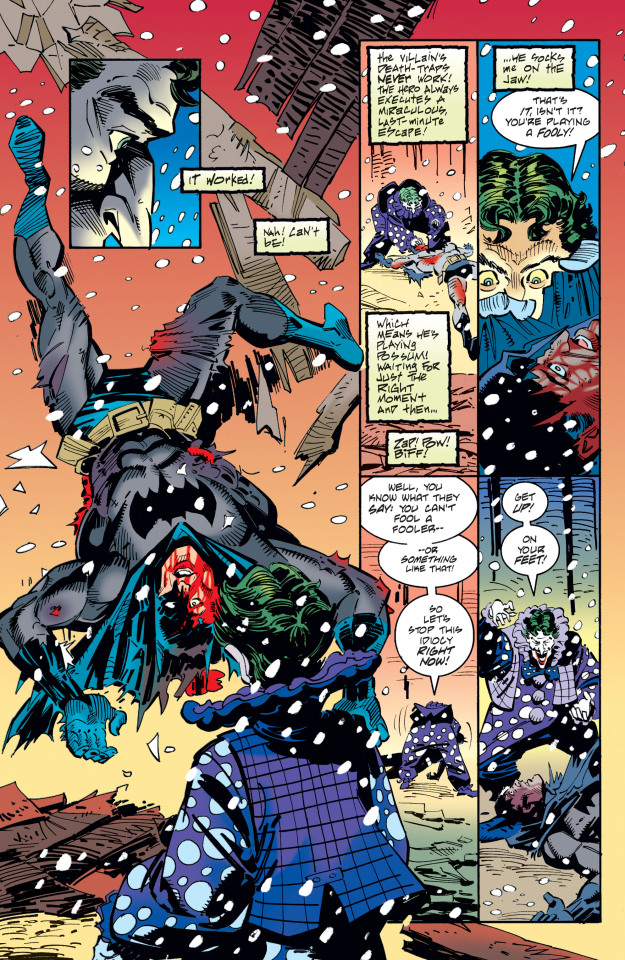
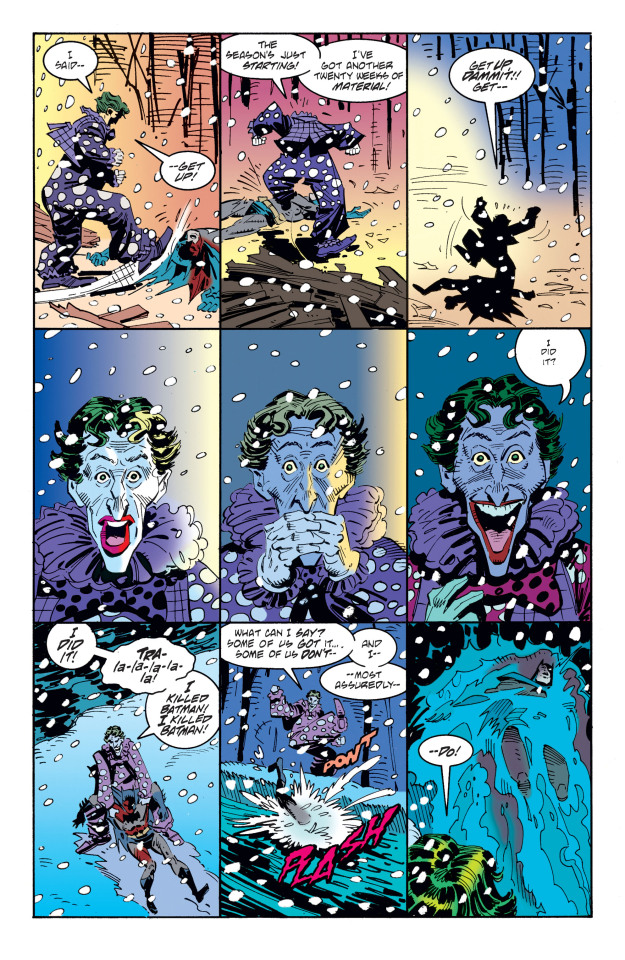
Joker returns to the Comedia Theater in Gotham and accepts that fact that since there is no more Batman, there is no need to continue with his run as the Joker. He blows up the theater and contemplates getting a job and doing something about his skin condition. Back upstate, two kids run to Dr. Lynn Eagles house and tell her they found a near dead man lying beside the river.
Three weeks have passed since the Joker kidnapped Councilwoman Elizabeth Kenner. Jim Gordon is in his office watching the news. Reports of a brutally beaten and strangled body being fished out of Gotham Bay are followed by Kenner making comments about Captain Gordon, taking him to task about not apprehending the Joker as well as the unknown fate of Batman. While looking at a picture of Joker on the Batcomputer, Alfred also wonders if indeed Joker killed him.
Joker has been living in an apartment in Park Ridge, the very same site as his bombing, since his last encounter with Batman. He has deluded himself into inventing a generic name for himself, Joseph Kerr, and that he just moved to Gotham City from someplace he cannot seem to remember. He has himself believe that he just lost his parents, his apartment paid for by an inheritance from their deaths, supposedly has a job working for an accounting firm, and is taking medication for his skin condition, living life as an average every day guy. He immediately bumps into a pretty young woman from across the hall named Rebecca Brown and the two are instantly attracted to one another.
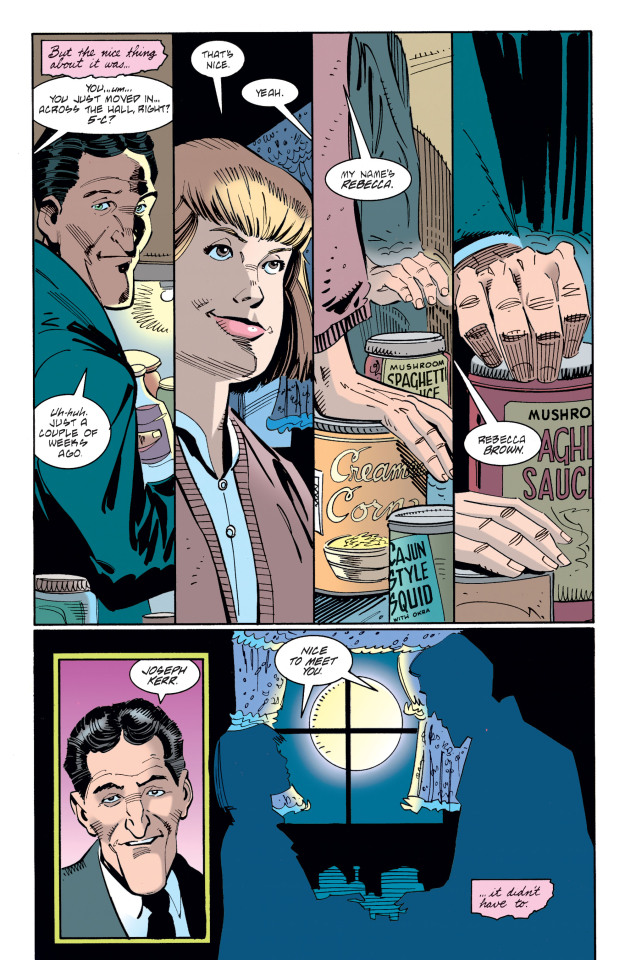
Weeks pass and Alfred still wonders if indeed Batman is dead, while Gordon continues to hear Kenner's harsh comments towards him and Batman's fate as well as keeping the faith by having the Bat Signal lit. Joseph and Rebecca have become a happy couple who enjoy the same things such as old comedic reels and radio shows from the 1930's and 1940's. However, kinks start to appear in the sanity of Joseph as he suffers from horrible nightmares and comes across various links to his former life as Joker.
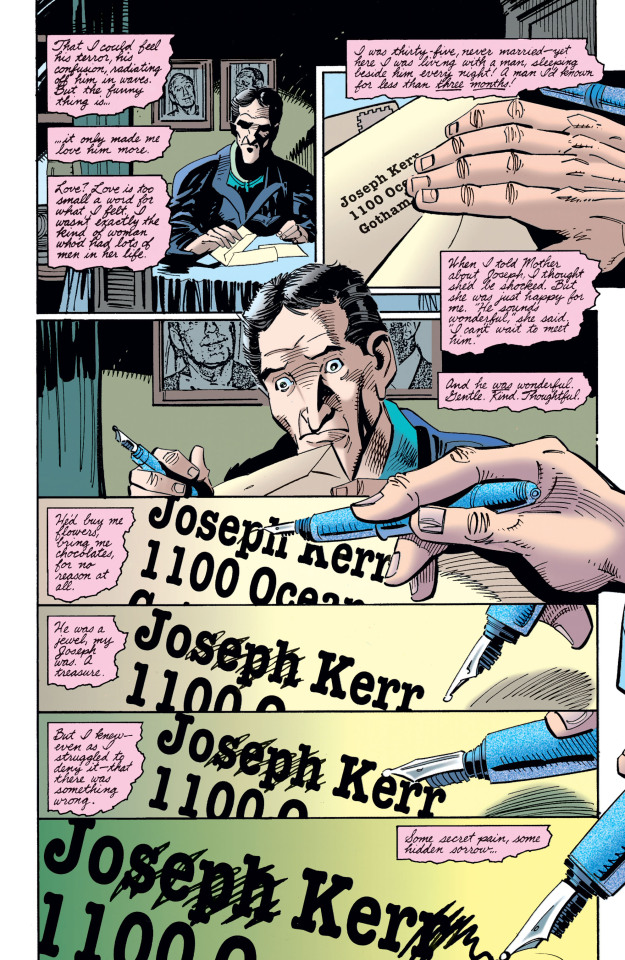
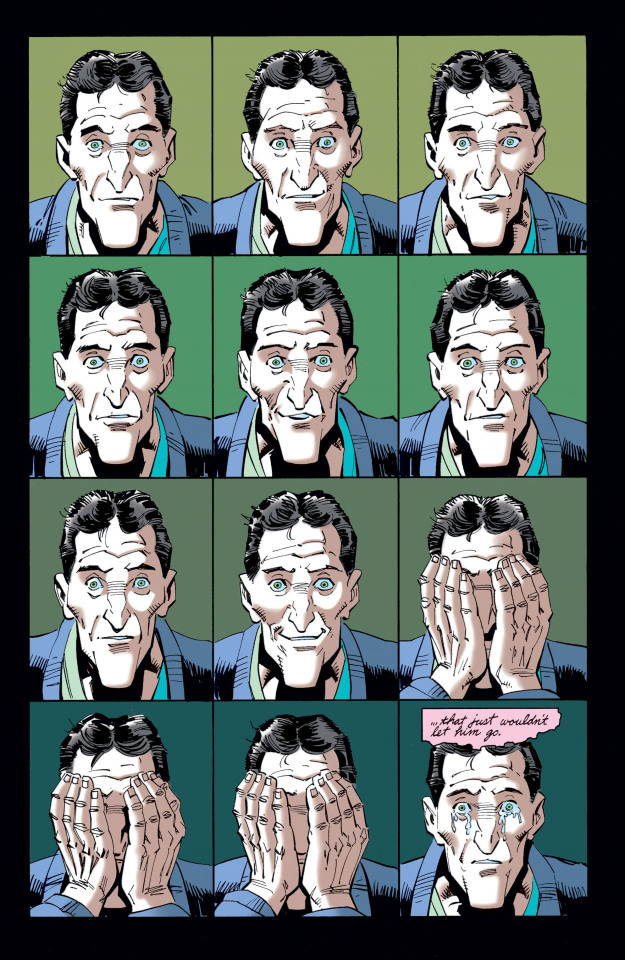
The body in the bay is identified as Dr. Elias Bruckner; a plastic surgeon who specialized in new faces for criminals. His being seen for the last time with the Joker right after the Comedia Theater was destroyed further fuels rumors of Joker still being at large in the city as well as Batman being dead. On the television news, tension between Gordon and Kenner become white hot, while Alfred tries his best to tend to the manor. Jospeh is watching this same newscast which causes him to become angry, almost hitting Rebecca in the process. He is able to stop himself from going through with it but runs out of the apartment and into the elevator, giving in a little to his former persona. Gordon finally turns off the Bat Signal one night.
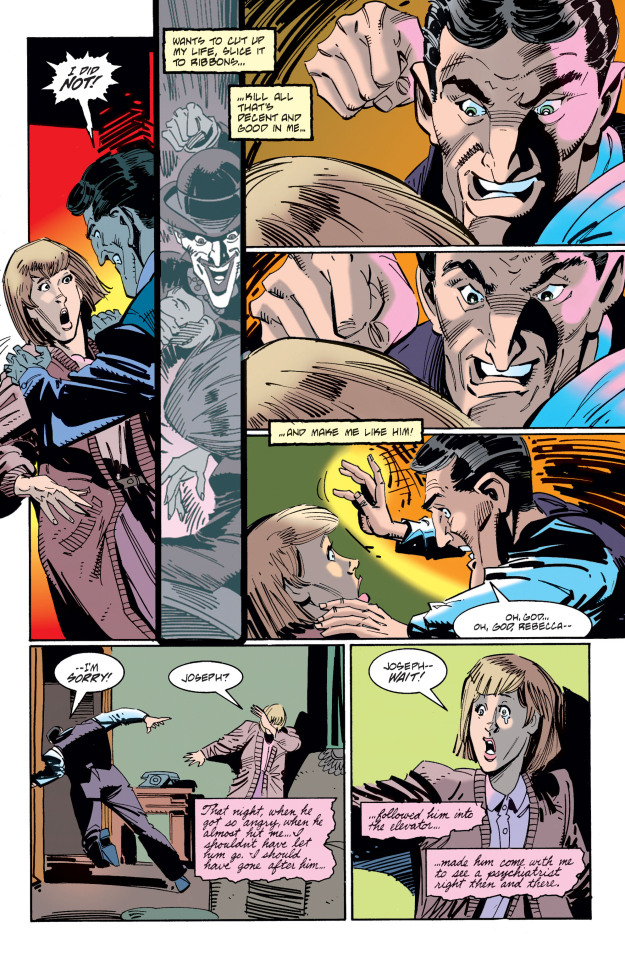
More weeks pass and Rebecca wakes up to a room of flowers and a happy Joseph, who proposes marriage to her. An ecstatic Rebecca accepts his proposal. Unable to sleep Alfred descends down into the cave when suddenly a familiar voice calls his name. He turns to see Batman who proclaims his return.
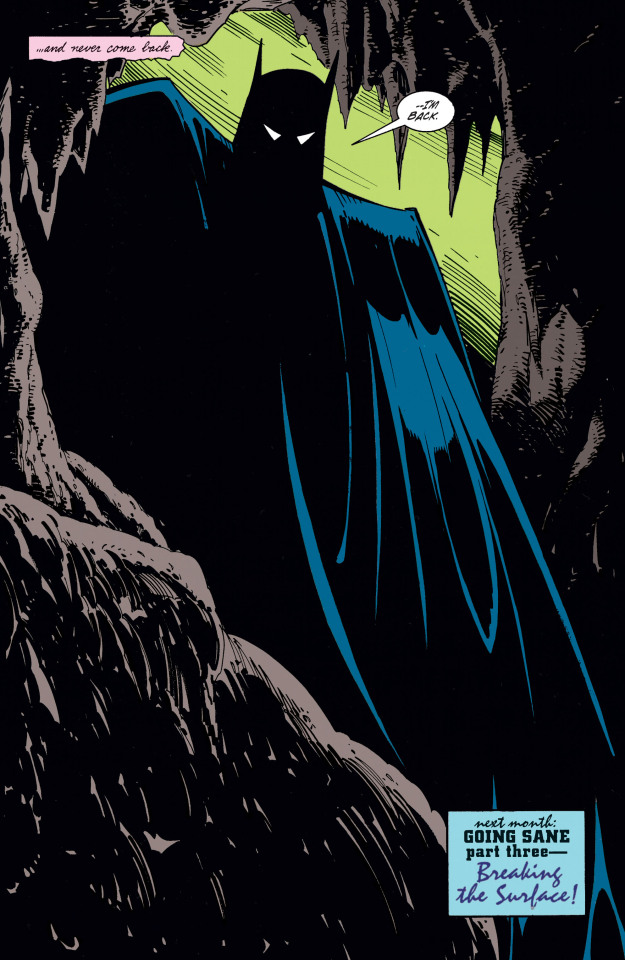
Joseph and Rebecca find themselves outside the dilapidated Comedia Theater with Joseph telling her how he loved the place as a kid. Rebecca doesn't get it as she was told he just moved to the city less than a year ago. Joseph plays it off as a harmless josh. Batman begins again on his search for Joker nearby while various flashbacks of his missing time come to his mind. He recalls how Dr. Lynn Eagles, from the upstate little town of Accord, did emergency surgery on him for his various life threatening injuries. She comes to call Bruce "Lazarus" during his time there.
Batman appears to Jim Gordon in his office and assures him that he will find Joker and bring him to justice, while hiding his apparent ache from his still recuperating body. Batman confronts Dorothy Bruckner, the widow of recently deceased Dr. Elias Bruckner. A alcoholic and failed plastic surgeon, Dr. Bruckner, catered to criminals wanting new faces. Batman easily deduces from Dorothy's reaction that this is enough to confirm that Joker hired him to do something about his skin condition and killed him when the job was done.
Flashbacks take Bruce back to his down time in Accord. Bruce asks why Lynn would take him in like this, to which she replies that simple intuition says that he is a good man. The idyllic quiet life in Accord makes Bruce think of possibly giving up Batman, and finding peace within himself in such a town. Lynn tells Bruce that she once moved to Gotham City for a few months but eventually returned to Accord because she hated the big city scene. Bruce likewise tells her vague truths about his life in the city.
In the cave, Batman is still retraining his body to act as it once did, when it hits him. Councilwoman Elizabeth Kenner's comments that Joker made her watch old comedic films, spurs Batman to cross-check rentals of such films at local video stores. Seeing the name of Joseph Kerr makes Batman wonder why Joker would be so obvious in this deception.
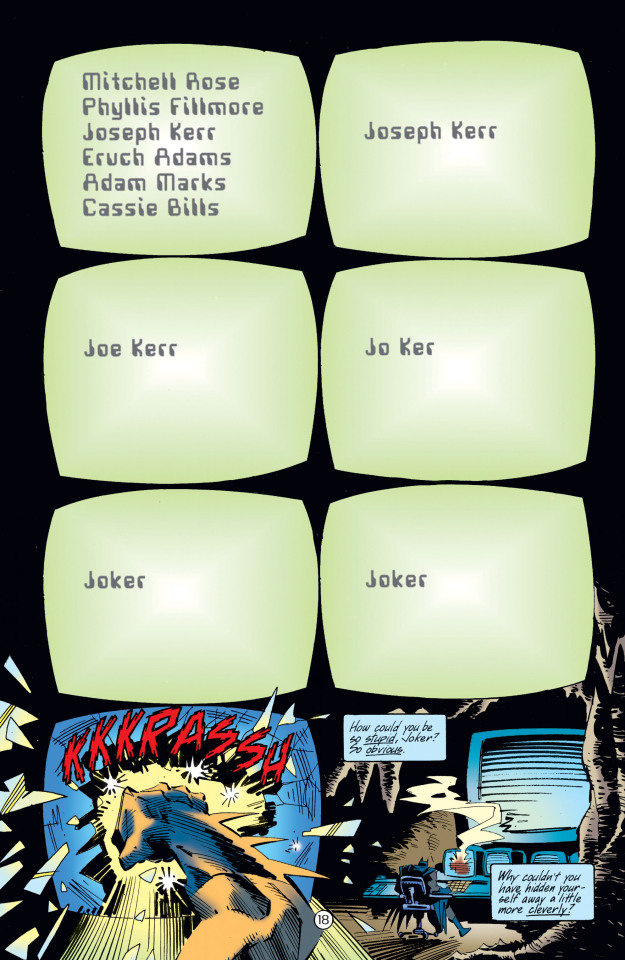
In a flashback in Accord one night. Lynn confesses to Bruce that she did indeed love Gotham City, but one night she came upon an intruder in her apartment, held her at gunpoint, and proceeded to rape her. The tragedy led her back to Accord to heal. After a few years she returned to the city to spend the day there. On the way back to her hotel however she was confronted by a man with a knife. She reveals that this time she was saved by Batman, and that was the reason why she helped Bruce the whole time, and returns his costume him. Upon hearing this, Bruce returns to Gotham City.
Batman comes upon Joseph and Rebecca's apartment and sees a picture of them. Joseph's innocent look casts doubt in Batman that he is Joker. The super, Mikey Sansonia, tells Batman that Joseph and Rebecca went on vacation in Pennsylvania weeks ago and that they are to be married. This solidifies for Batman that this is a just a deception by Joker to throw him off the trail. In another part of town however, Joker reappears.
During a harsh thunderstorm in Gotham City, Batman comes face to face with Joker, who himself is once again holding Councilwoman Elizabeth Kenner hostage. This time Joker called the cops himself and demanded that Batman meet him upon a city rooftop. With a knife to Kenner's throat, Joker tries to blast Batman with a trick violin. Batman is able to get out of the way in time. Joker makes off in a one man jet pack. Batman uses his Batarang to grab onto him, but Joker cuts the line and heads out to sea.
A flashback shows Joseph Kerr and Rebecca Brown in a quaint little cottage in rural Pennsylvania. Joseph is so happy about Rebecca's acceptance of marriage that he keeps asking her over and over again. His happiness seems almost like lunacy to Rebecca. Once again he brushes it off as a harmless josh. The couple decide to go for a walk in the rain when they come upon a small brook. Joseph has a map that shows a footbridge somewhere, but when he goes to look for it some newspaper, he sees Batman's picture with the story proclaiming his return. Joseph proclaims his love for Rebeccca again, but asks her to stay put while he goes to look for the footbridge. Out of her sight, Joseph jumps into the small river which washes him downstream. When he comes out of the water, the Joker persona has once again taking him over completely.
Present day, Joker now has Kenner on a boat, speaking to her as if they are lovers going on a honeymoon. Batman catches up to them in his own makeshift ski-boat. Joker proclaims that Batman will not take him down and will not take Rebecca away from him also, a statement that confuses himself. Batman tells Joker to give Kenner up onto a police helicopter circling the sea. At first he refuses, but suddenly sees Rebecca's face instead for a split second and finally gives her to the chopper. Joker has his boat wired to explode in thirty seconds and proceeds to split with his jet pack, but Batman grabs onto him. Unfortunately for both men, the jet pack runs out of gas, and the two are caught in the explosion. Batman is able to grab an unconscious Joker as well as a helicopter ladder, which takes them to safety.
Joseph Kerr is proclaimed missing and presumed dead with no body having ever been found, leaving Rebecca sad and grieving for the love of her life, Joker is locked up in Arkham Asylum, and in the small town of Accord, Dr. Lynn Eagles receives a thank you in the form of flowers from Batman.
REVIEW
This is a strange tale. As all Legends of the Dark Knight stories, they may or may not be canon, even at that time. I could see this story happening, but the fact that Accord or Doctor Eagle were never mentioned again, it makes me think it wasn’t. In any case, it doesn’t really matter. (Please let me know in the comments if some other writer ever used these characters again).
As a standalone story, it’s a bit too slow. Perhaps my problem is with the art that doesn’t allow me to feel in that place with the characters. As a result, I cannot really relate to the characters that much (it also doesn’t help that the three female characters are almost identical).
The one thing I think is really interesting about this story is how Batman thinks, and how a sane Joker would think. The moment Batman realizes where the Joker is he feels disappointed, but he is really afraid. In a way, both characters went through a death and resurrection ordeal in this story, but both come back as the same person they were before (so there is no character transformation). Perhaps the one thing that had a lasting effect in Batman, was Doctor Eagle and that “trip to his happy childhood” (let’s assume that is still happening in his mind in 1995).
I wouldn’t really recommend this story unless you like seeing the Joker as a regular person (for two issues).
I give this story a score of 6.
#joe staton#steve mitchell#joker#dc comics#comics#review#batman80#batman#1994#1995#modern age#batman legends of the dark knight#legends of the dark knight
14 notes
·
View notes
Photo


“Gift Dressing” — Early 20th Century Gift Wrapping
Because today is my birthday, I thought I would do something vaguely birthday themed for today’s post. And seeings as I’ve already covered cards for Valentines Day, I thoughts a look at how gift wrapping looked in our time period would be interesting.
History
Victorian Beginnings While gift wrapping in one form or another has long existed throughout the world, in the west, the practice as we would recognise it got its start during the Victorian era. Initially, in the UK specifically, it was employed by the upper-class as a show of status and wealth, and the wrap was made from wallpaper material — dense and difficult to work with. The act of wrapping was an extravagant affair with elaborately decorate papers, ribbon, and lace.
Wrapping at the Turn of the Century — 1900-1920 Over time both the material used and the intention behind the practice shifted. By the beginning of the 20th century, the paper used was light with bright colours — tissue paper was common for the first decade or so. More cost-effective manilla papers were also used at this time by stores to wrap purchases, and by the middle-class as a less ostentatious material with better coverage for gifts. This time also saw a shift in the British motivations behind wrapping — rather than showing wealth, wrapping was used to conceal the value of the gift from anyone but the recipient.
Advent of Modern Printed Gift Wrap — 1917 In America, the first company to supply gift wrap was Hy-Sill Manufacturing Inc, however, a change in materials happened in 1917 with the accidental discovery by the men who would become the Hall Brothers, and later the behemoth Hallmark. During Christmas that year, the brothers’ stationary store sold out of the then staple wrapping material of mono-colour tissue paper — gasp! Looking for a substitute to meet demands, they found in their inventory a stack of decorative “fancy French paper”. This paper was generally used to line envelopes for decoration, not for wrapping, but at 10c a sheet it was a hit with their customers and returned the following year to the same success. In 1919 the success of this new approach to wrapping paper saw the brothers producing and selling their own prints and the rest is history.
World War II Wrapping paper was one of the few exceptions to paper rationing towards the wareffort. It was decided that not rationing the material would contribute to keeping up morale. During this period, sales of wrapping paper incready by some 20% as a result.
Materials and Techniques
The materials used have expanded and come in and out of favour over the decades. Some of the materials that were available (if not necessarily popular) during the interwar period included:
Tissue paper: Most common material for the first two decades of the 20th century. It would come in single colour options, typically festive colours like white, green, and red.
Printed paper: By the beginning of the 1920s, the Hall Brothers were producing their printed paper to customers and it proved a popular option. In 1919 they sold it for 25c for three sheets. The designs on printed paper changed in the 1930s and 1940s with the growth in Art Deco style — out were the florals and cherubs, and in were the repetitive and geometric patterns.
Manilla paper: A cheaper option, this plain brown paper was a favourite of stores to wrap purchases, and a viable option if the more fancy papers were out of your budget.
Newsprint: Admittedly, I didn’t see this mentioned in many of my research sources, but I feel it would be remiss not to mention it. As people still resort of newspaper as a wrapping material today in a pinch, I highly doubt that it wasn't utilised in the early 20th century.
Fabric: A wrapping style long used in Japan, this was another cost-effective way of wrapping a gift. I, again found little mention of its use, but in a pinch, it does need like an obvious solution to wrapping a gift. Where our boys ever employed it, I’ll leave to your best judgement.
Cellophane: Introduced in 1912, cellophane was used for wrapping candy, and grew substantially in popularity from 1928-1930 after it was made moisture-proof. It was used both alone and together with other wrapping materials.
Gift bags and boxes: An alternative to paper wrapping, and also reusable.
Beyond the types of material used for the wrapping, also worth noting are the products used to secure any wrapping — because scotch tape did not make an appearance on the scene until 1930!
Ribbon: An obvious staple of wrapping, even today, but prior to adhesive options, ribbon was more than just decoration. Ribbon was used to secure the paper and ensure that the gift remained securely covered. There is a particular skill to this.
Twine and rope: A less fancy alternative to ribbon, these served the same function.
Adhesive Seals: These were small, gummed seals that could be applied to wrapping paper. They worked in the same way as stamps, requiring the user to lick the back-side before applying it to the paper. From this description, they were tedious to use and had a limited life-time.
Wax: The same as one would use a wax seal to seal a document, they could also be used to secure gift wrapping, this it is a very fancy option. So fancy.
Hall Sheen Ribbon: A product produced by Hall Brothers in the 1930s to accompany their printed paper, this was a ribbon that stuck to itself and gift wrap when moistened.
Adhesive tape: Scotch Cellulose Tape was invented in 1930 by Scotch brand, which was a game changer when it came to gift wrapping. Prior to this, Scotch as introduced their adhesive masking tape for painters, but the 1930 product was the first waterproof, clear adhesive tape. It would be worth mentioning that the skills and knowledge needed to wrap without tape would have still been around long after tape became available, and would likely have been seen as a luxury, especially to anyone on a budget.
All the other embellishments: The fancier you wanted to go, there were also other adornments one could add to gifts, including bows, tassels, decorative seals and stamps, etc.
So how much would these items cost? While it wouldn’t reflect lower-cost retailers, both Loesers and A&S printed prices in Brooklyn Daily Eagle papers, which gives an idea of how much higher-end products would have put you out of pocket.

And then, there was always the ever-present option of getting a department store to wrap for you!
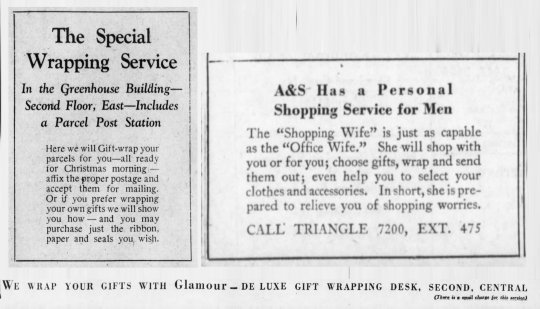
Brooklyn’s Abraham & Straus department store (and likely Loesers as well) offered gift wrapping services — at ‘a small charge’. Obviously, this was intended for customers, but tell me you don’t believe Bucky could charm himself some free wrapping.
Image Sources
Woolworths ribbon, 1930s | Source Woolworths ribbon and wrap, 1930s | Source A&S and Loesers Price ad complilation | [1] [2] [3] A&S Wrapping Service ad compilation | [1] [2] [3]

This post has been sponsored by Patreon supporter Joanna Daniels —longtime, and beloved follower. She and I would like to dedicate the post to the loving memory of her mother Joan Daniels, who sadly passed away this past year and who is sorely missed. Spring has hit us and the days are getting sunnier, don’t forget to get out and enjoy it!

#steve rogers#gift wrapping#gift dressing#gifts#1920s#1930s#1940s#vintage wrapping#vintage#bucky#brooklyn bridge#bucky barnes#james bucky barnes#captain america#captain america: the first avenger#captain america tfa#historically accurate#early 20th century#turn of the century#fanfiction#fanfic references#fanfic research#fanfic writing#captain america reference#writing resources#writing reference
39 notes
·
View notes
Text
Ten Questions Book Review - The Girl with the Leica by Helena Janeczek
What is it? Story of Gerda Taro, German photojournalist killed during the Spanish Civil War in 1936, as told by people who held her dear.
Who should read it and why? Anyone even vaguely interested in history/the 1930s should absolutely read this book.
Which genre(s) is it? Historical fiction. I wouldn't say it's a biography, but it is based on real events and real people and real photographs, so I think it should be mentioned
What is the setting? The main setting is Paris, 1930s, and Leipzig (late 1920s) is the setting of a good chunk of the first part, plus parts Italy and parts of Spain.
How are the characters? The three narrators have all a quite distinctive voice, and they show similar yet different sides of Gerda. She is the main character, really, and the portrait that emerges is extremely interesting. She's not just a character in a novel, she is a real person, and it shows.
What are the strengths and weaknesses of the novel? Is it a weakness that we don't have Robert Capa's point of view in the novel? Maybe. While I think it is, it's probably better this way. I'm not sure I would have liked it. The main strength of the book lays in the voices that depict Gerda, which sort of become Gerda herself. She is always the protagonist, even if she is not the narrator. She is that captivating. It's great, plus it makes the whole real person-narrator-actual writer really interesting to analyze.
Did I cry and/or laugh? Sure, I cried a couple of times, especially with Ruth's pov. I didn't laugh, I really don't think I did.
Who shouldn’t read the book? Most of the characters are Jewish, who become the object of several antisemitic laws and acts. There's death, violent death because of fascists and because of war. There's an abortion. It's not an easy book to digest if any of these things triggers you.
Any random comment? I have wanted to read this book for so long... And I finally did. And it feels great.
Which quote stuck with me?
At the end of the day, what Gerda loved without reservation wasn’t me nor you and nobody else, but all the people who were putting their lives on the line to fight fascism, it was Spain and her work alongside Spanish people.*
(*translation is mine because I couldn’t find one)
0 notes
Text
Before Conan the Barbarian, There Was Bran
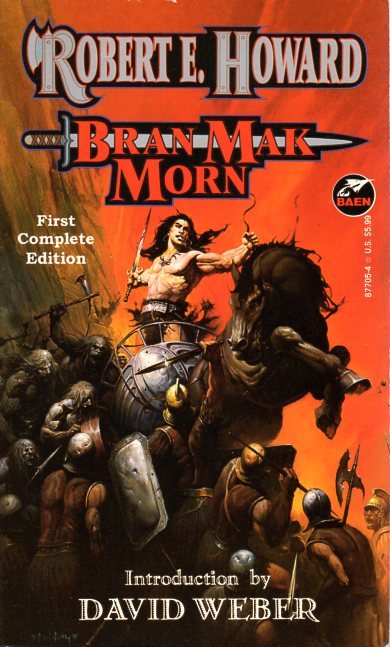
By Adrián Maldonado
I write about medieval barbarians in my legit academic work, and use this blog to explore how they occasionally escape from our powerpoint slides into the public consciousness.
I recently realized that for all my degrees, I didn’t know a thing about one of history’s most famous barbarians. It was high time I looked up Conan.
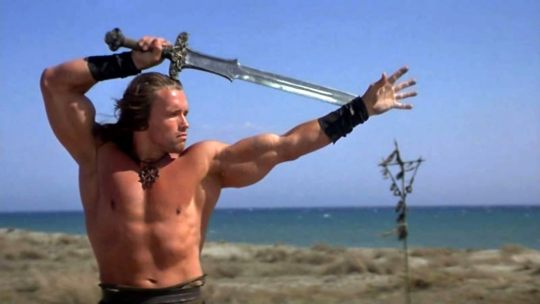
Stock image of Dark Age Europe
In my 80s childhood, Conan the Barbarian was a kind of folk character – a stock image of a beefy white guy in a furry loincloth with a giant sword. (I would probably be picturing Conan the Librarian, to be honest.) But I already had He-Man in my life, a knock-off Conan cartoon made to sell toys, though I could not have known that because the cartoon was so unspeakably awesome it would brook no questioning. Indeed, I only discovered the Schwarzenegger Conan films later on, when I was old enough to realize he had made other weird, non-science fiction films back in the Reagan era. I knew vaguely that the character was based on a book, or was it a comic book? This was before the internet, and before I could ever give a shit about a character with no good action figures.
Flash forward twenty years or so, when I am a grizzled Xennial hunched over his computer, writing about depictions of the Picts in pop culture. Immersed in terrible filmic depictions of ancient Scottish warriors (always warriors), it struck me that I had never thought about Conan the Barbarian. What kind of barbarian was he meant to be? Did his story take place in some kind of historical epoch? Were there Picts in it that I could add to my list?
Imagine my shock when I did find a Pict down this rabbit hole (or souterrain?), and he looked like this:
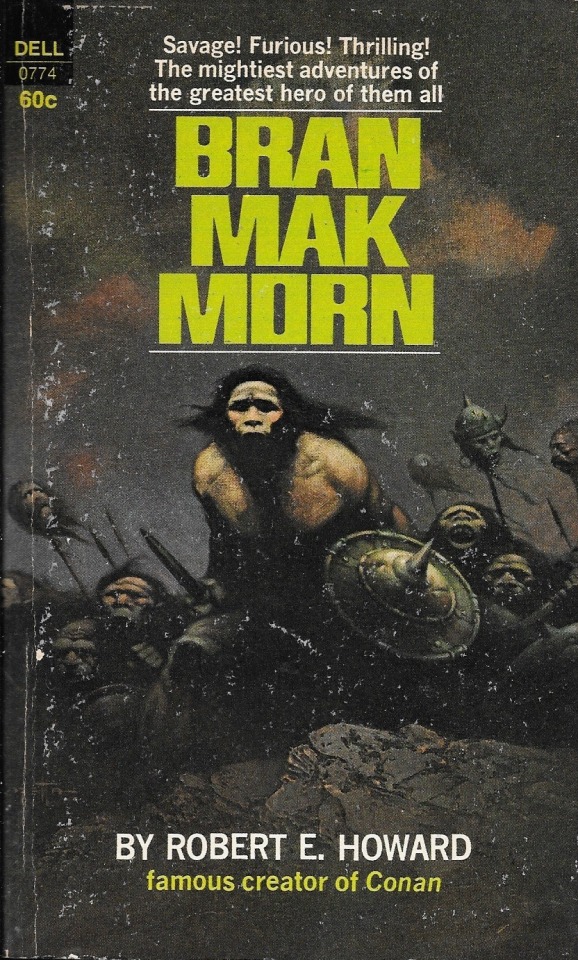
Whatever else I was working on, stopped.
***
Robert E. Howard is best known today as the creator of Conan the Barbarian. But little did I know that he was one of the first pop culture appropriators of the Picts. Indeed, he was writing about the Picts long before he even conceived of Conan. The Picts were his muse. I feel like this is important, and I may need more than one blog post to say why. But first, an introduction.
I had seen some hilarious renderings of Picts over the years, but they always fell into the usual stereotype of tattooed maniacs hurling themselves onto Roman spears.

Tattooed maniacs hurling themselves onto Roman spears (source)
This 1960s paperback collection of stories by Howard entitled Bran Mak Morn, apparently the last king of the Picts, depicted this king Pict as a Neanderthal surrounded by howling ape-men. To me, this seemed like the purest distillation of the idea of the barbarians beyond the wall as sub-human, a trope developed in Roman imperial propaganda and continually reproduced today by the Hadrian’s Wall heritage ecosystem.
The paperback was one of a series of reprints of Howard’s genre-defining pulp fantasy of the 1920s and 1930s, brought back to life in the wake of the Tolkien wave of the 60s. Closer inspection revealed that Frank Frazetta’s 1969 cover image bore little resemblance to the description of Bran himself in Howard’s tales, even if his Pictish ‘race’ was certainly of a simian variety. More on this presently. What I wanted to know first was how a Texas kid learned about the Picts in the early 20th century, and came out with this.
***
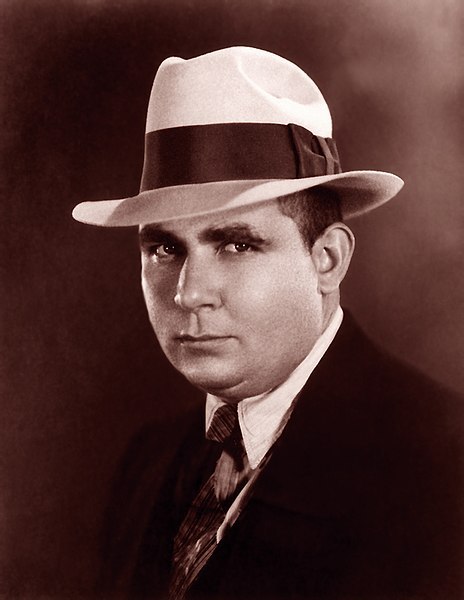
Robert E Howard had a tough childhood in his native Texas. Coming from a broken home, he moved around a lot and read books to keep himself company. In 1919, at the age of 13, his father dragged him to New Orleans while he took classes, so he squirrelled himself away in a library on Canal Street. It was there that he first read about the Picts in a book about British history. The image of a little, dark race from the north that hassled the Romans but could never be conquered fascinated him. Perhaps due to the ray of light this book gave him at a sensitive point in his childhood, the Picts remained ingrained in his mind for the rest of his short life, which he would later take in 1936, at the age of 30.
Like many other nerdy kids, he wrote stories to pass the time. In his archive were found several early writings which reveal the impact the Picts had on him. There is a school paper from 1920-23 about the Picts. The first story he ever submitted for publication was about the Picts, ‘The Lost Race’, but it was rejected by the editor of Weird Tales in 1924. He sold his first story later that year, beginning his professional writing career. A revised version of ‘The Lost Race’ was finally published in Weird Tales in 1927, introducing the world to Bran Mak Morn, a Pictish king who fought the Romans. He would go on to make several more appearances in Howard’s swords-and-sorcery tales, and the Picts eventually became one of the myriad ‘races’ in Howard’s Hyborian Age, a proto-prehistoric shared universe inhabited by Conan the Barbarian.
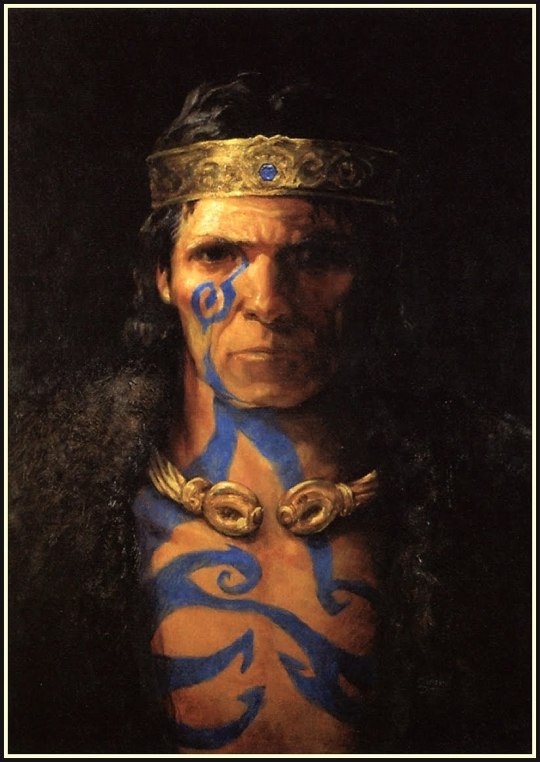
Bran Mak Morn by Gary Gianni (source)
Howard’s Picts are a peculiar bunch. From his first essay on them, he describes them as the remnants of the stone age inhabitants of Britain, comparing their appearance to Native Americans. In this view, they were the ‘Mediterraneans’ (as opposed to Celts or Nordics) who first brought the knowledge of farming to Britain in the Neolithic. They were eventually swept aside by the fair-skinned ‘Celtic’ race of metalworkers, at which point they were forced to mingle and interbreed with the indigenous cavemen, a barely human simian-like race. This meant that by the arrival of the Romans, the Picts had become stunted, swarthy, long-armed ape-men. All except Bran Mak Morn, their king, who had kept his bloodline pure. All pretty disgusting racial logic now, but hey, so the argument goes, it was the 20s.
Except that here it was, unfiltered and raw, in a book released during the height of the civil rights struggle in the United States. I bought this ancient artefact off of Amazon for pennies, and holding it in 2017, it felt like I’d acquired an illicit antiquity. Plenty of writers have tripped over themselves to call out and defend Tolkien and Howard regarding the racial (if not always racist) component to their mythical prehistories, so I won’t go down that route just now. But that cover image haunted me.
***
In 2005, Bran Mak Morn received a brand-new edition, the Weird Tales stories now bundled with unpublished manuscripts, fragments of Howard’s correspondence, and critical essays by Rusty Burke and Patrice Louinet. Armed with an annotated timeline of Howard’s Pictish writings, which spanned his career, and supplemented with google-fu, I was able to clarify the genesis of Bran Mak Morn.
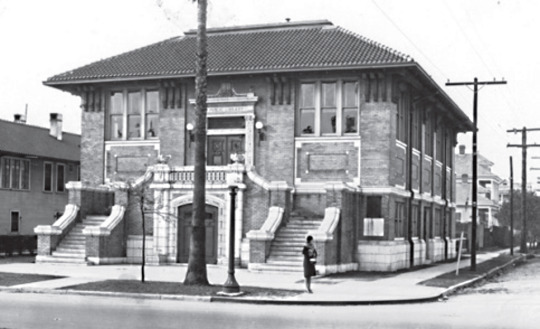
Former Canal Street public library, New Orleans, 1911 (source)
It is possible to trace the public library Howard visited when he was 13, when he first encountered a British history book and his vision of the dark, prehistoric Picts. The Canal Street public library in question must be the one that formerly stood at 2940 Canal Street at the corner of South Gayoso, opened in 1911. A photograph survives on the New Orleans library website, and Google Maps reveals it is now a Yoga studio.

Origin myths of the Picts (source)
Rusty Burke has also plausibly identified the very book that Howard seems to have read: The Romance of Early British Life (1909) by George Francis Scott Elliot. This is apparently one of the flashy, pulpy ‘Library of Romance’ published by London-based Seeley and Co, described as ‘profusely illustrated’ ‘gift books’, which included among their number volumes such as The Romance of Modern Mining and The Romance of the World’s Fisheries. The author Scott Elliot was a botanist and antiquarian, president of Dumfries and Galloway Natural History and Antiquarian Society during an apparent low point in its history.
The fairly ridiculous book in question seems to have been written for Edwardian teenage boys, and does indeed bear the DNA of Howard’s later writing on the Picts: “In very ancient times Britain had been twice conquered, first by the small, dark Picts of the Mediterranean, and later (about 2000 or 1000 B.C.) by the tall, brown-haired, Gaelic-speaking Celts (237).” The chapter on the introduction of farming to Britain is called ‘The coming of the Picts’, in which Scott Elliot explains that they have been called by several names before – Homo Mediterraneus, Basques, Iberians, Silurians, the Firbolg, the Dolmen-builders – but he calls them Picts to save on ink (80-1). He claims they are still readily identifiable in the present day, as the short, brunette people who are mostly found in towns and cities, unlike the fairer Teutons or Kelts who prefer the countryside (92-3).
Howard’s vision of the Picts was thus formulated by the equivalent of our contemporary public archaeology, an accessible potted prehistory of Britain by one of Scotland’s leading antiquaries. Why this particular image, of a dark, forgotten people without a history, resonated so deeply with him, is a subject to ponder. But he was clearly not alone in his fascination. While racial views of the past soon died out in archaeological writing, they would go on to have a tenacious grip on the fantasy world. And which of these two genres do you think has a greater influence on people’s image of the medieval past?
***
Why does any of this matter? It is a demonstration of the role of ‘the Picts’, in various guises, as the untermenschen of what you might call western folk history. The fact that a young boy in inter-war Louisiana could head to the nearest library, read about them in a cheap history book, and then build a world-beating fictional universe that is still beloved today based on this is remarkable. As I’ve spent some time documenting on these pages, that image of the Picts is still in a way with us. A recent article in the Glasgow Herald has the reporter coming to the shocking insight that the Picts were not ‘hairy savages’ after speaking briefly to a couple of scholars. I wonder if that means we are doing our job well, or terribly.
It also opens up questions about the central role of race at the origins of both archaeology and the fantasy genre, a sticky subject that will have to be the subject of future blog posts [Editor's note: now read the follow-up to this post]. In the meantime, go check out similar topics being covered over on The Public Medievalist.
And hey, why not donate to your local public library while you’re at it?
***
Follow us on @AlmostArch
Header image via Jeff Black
5 notes
·
View notes